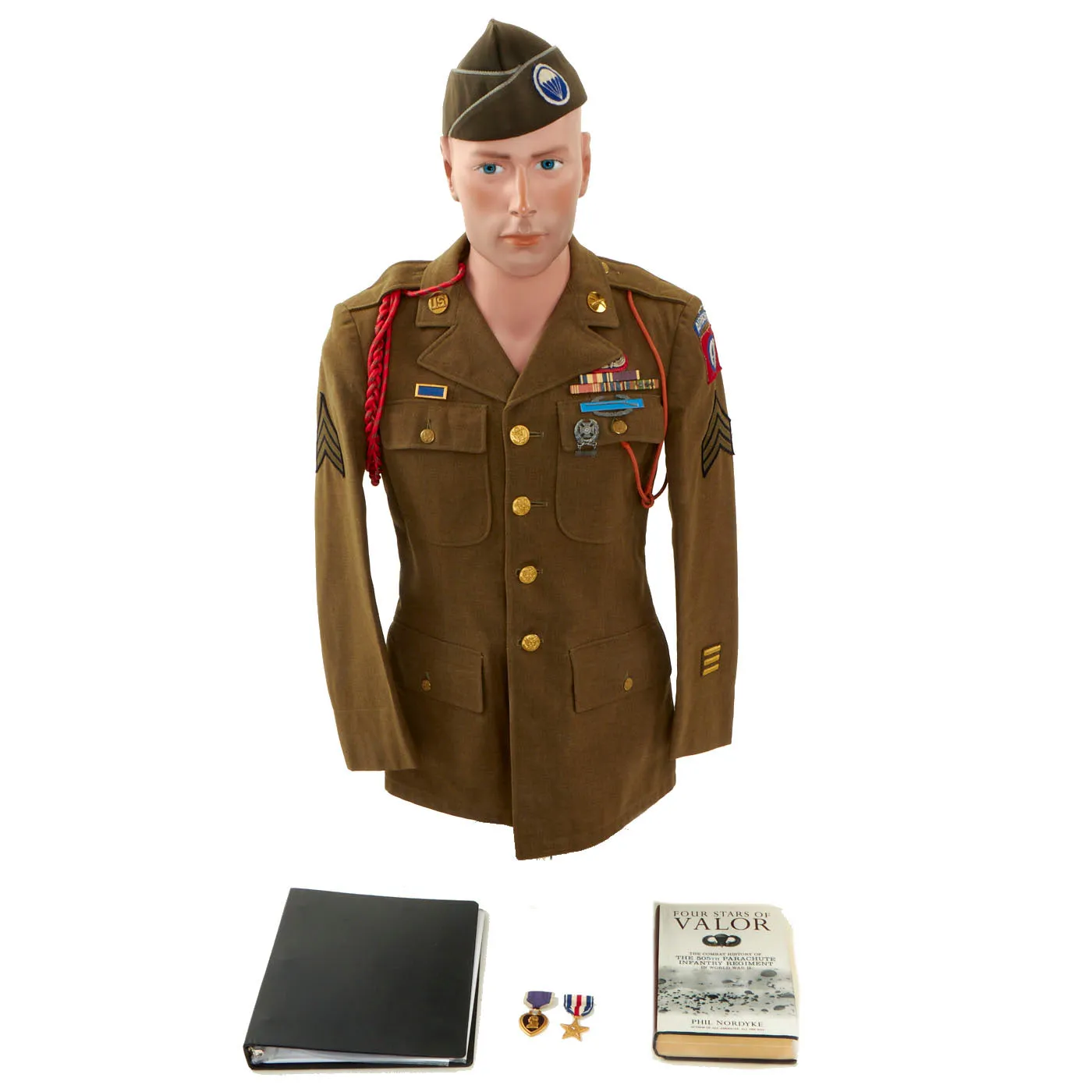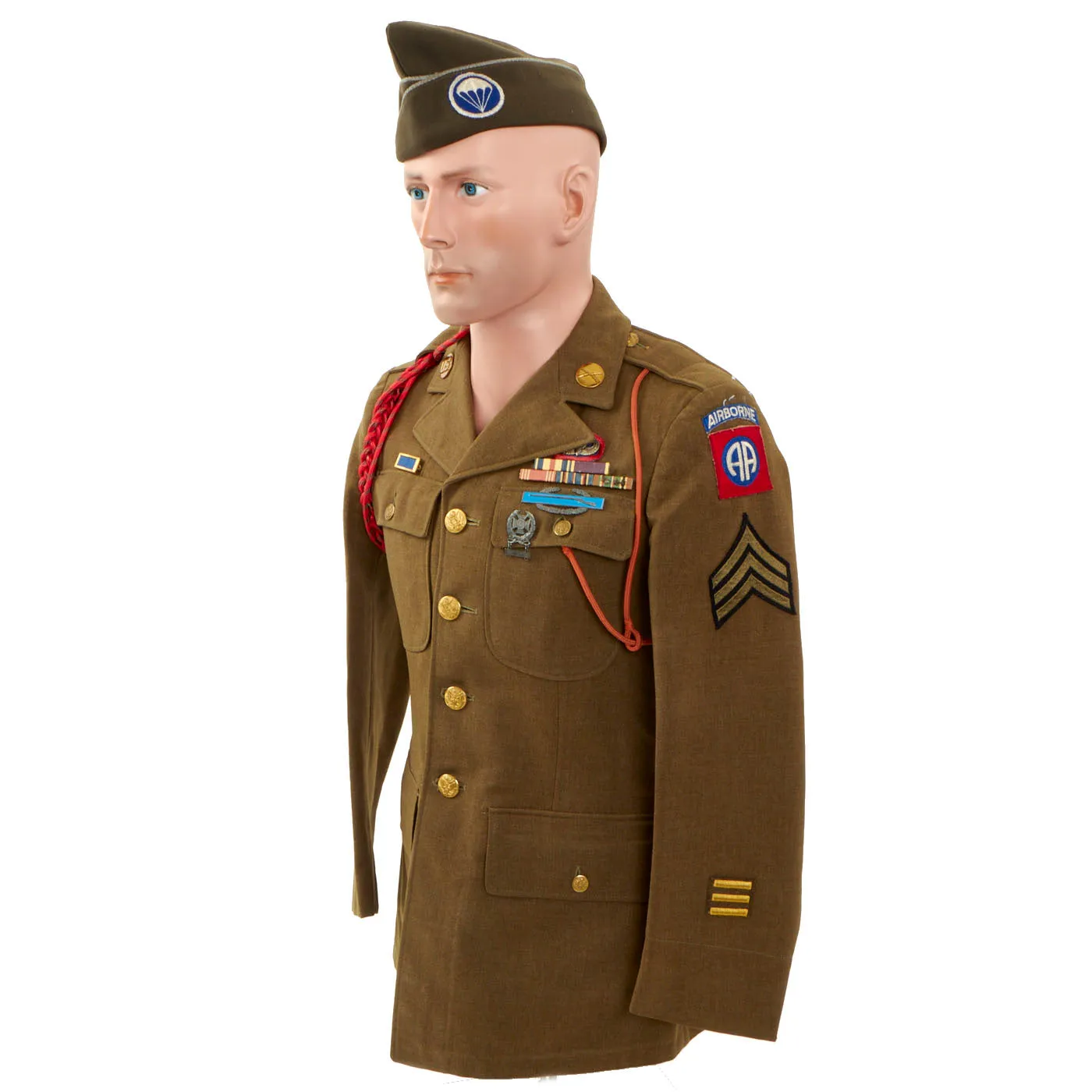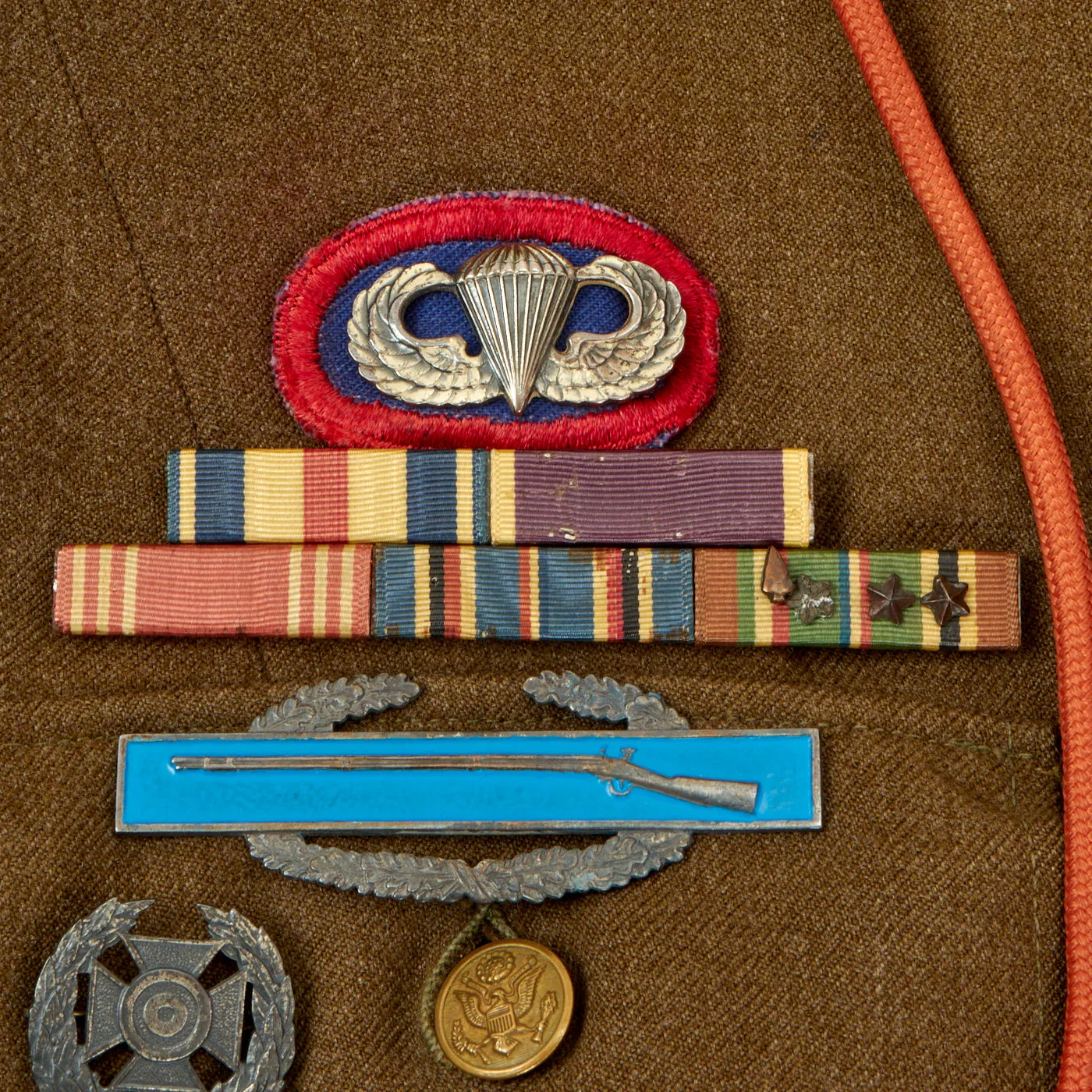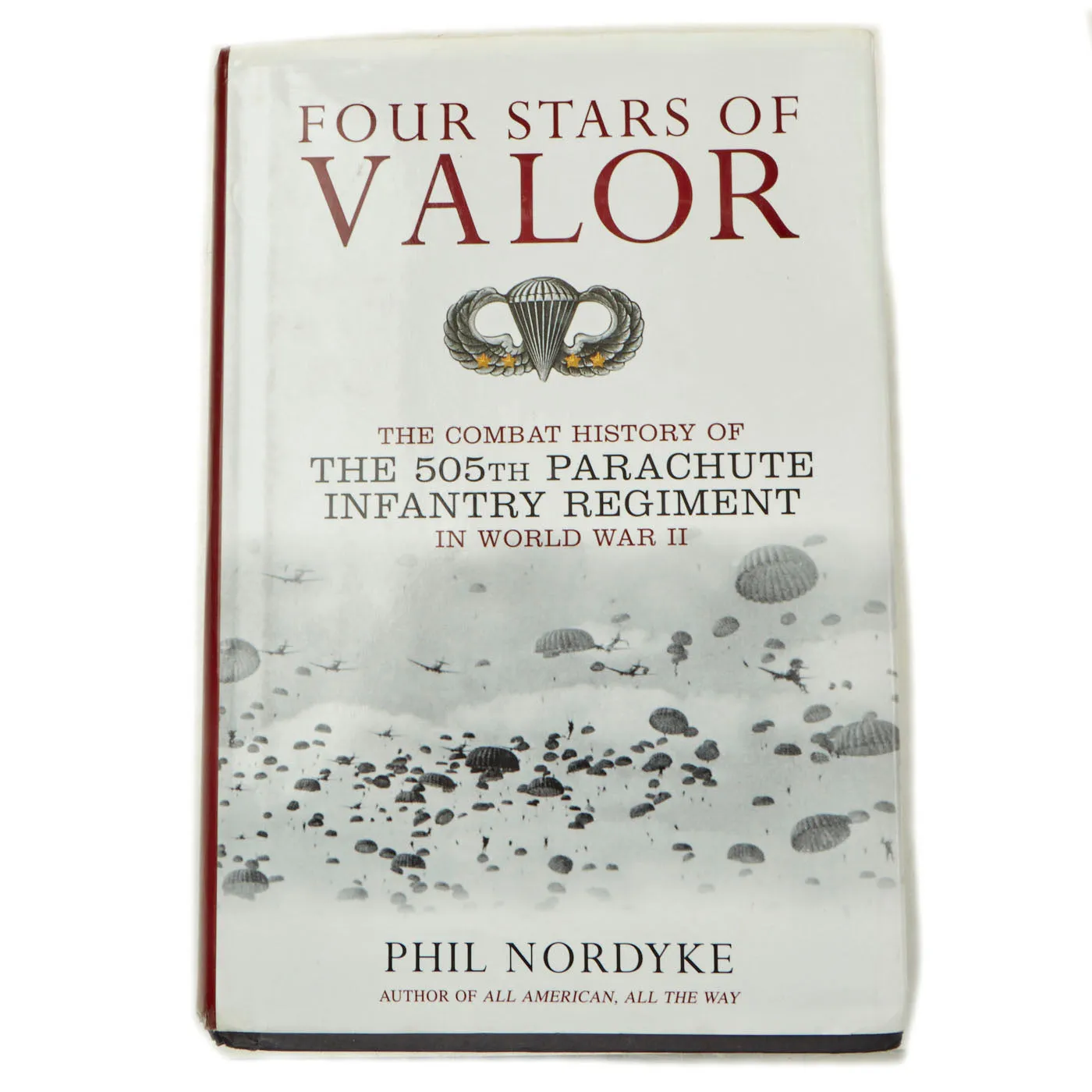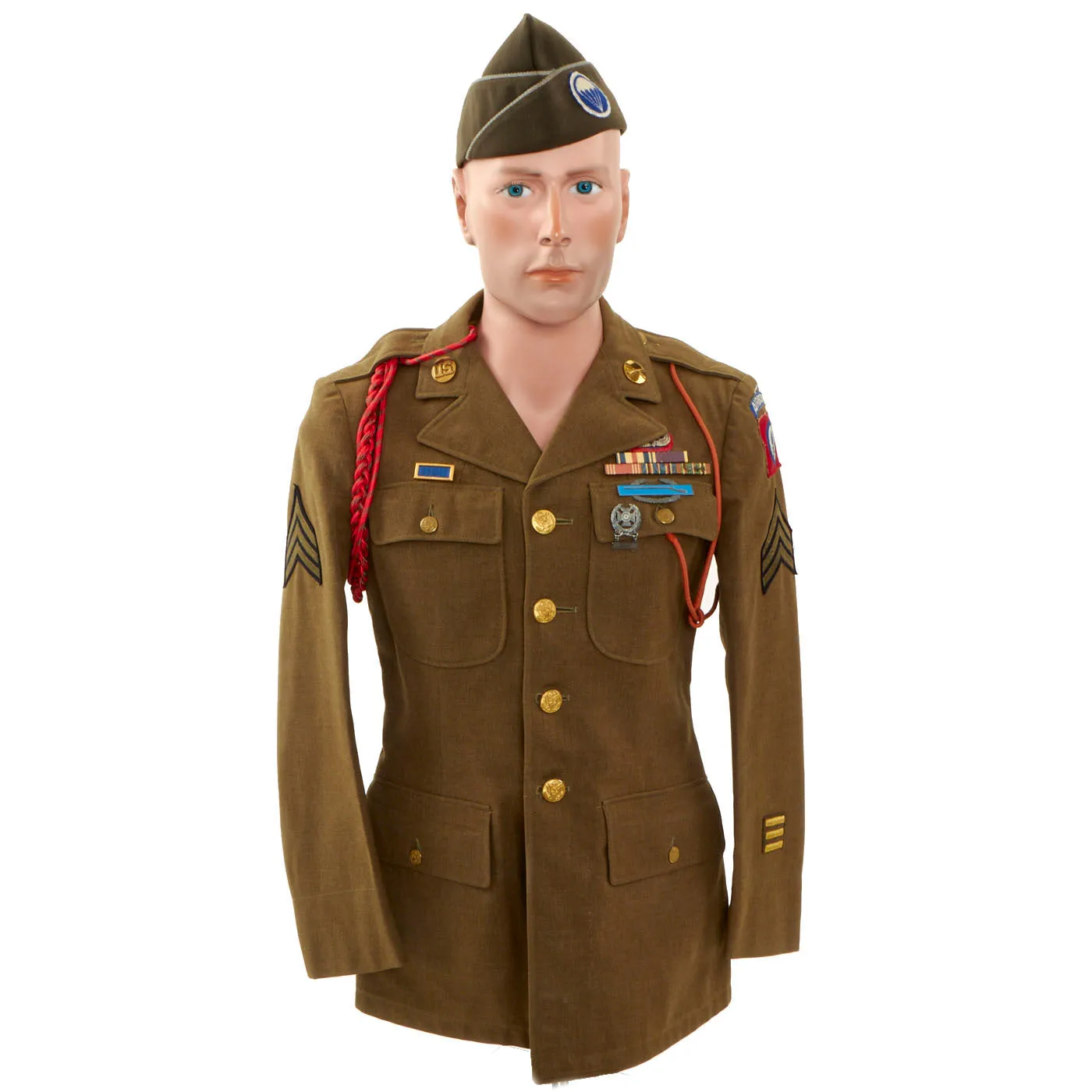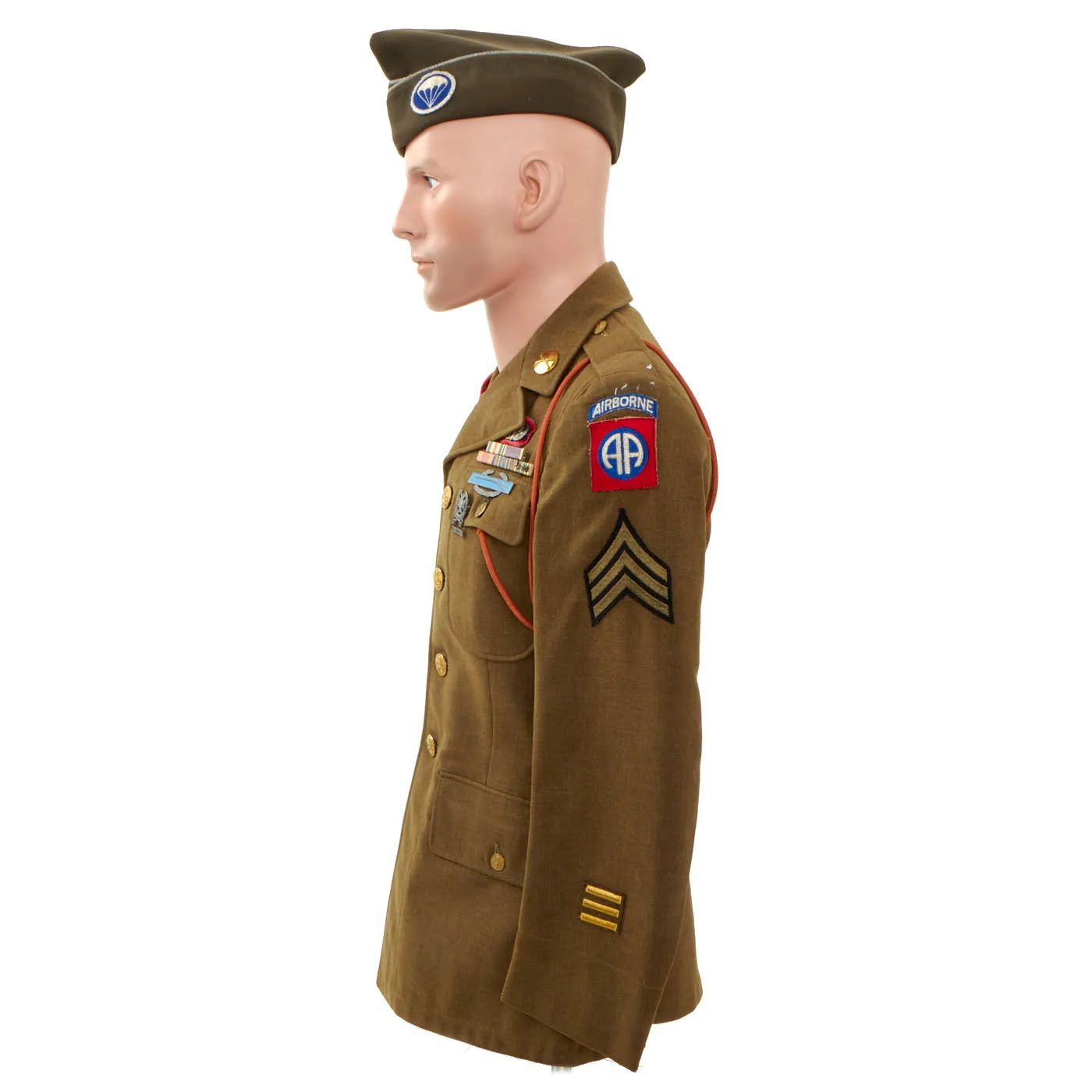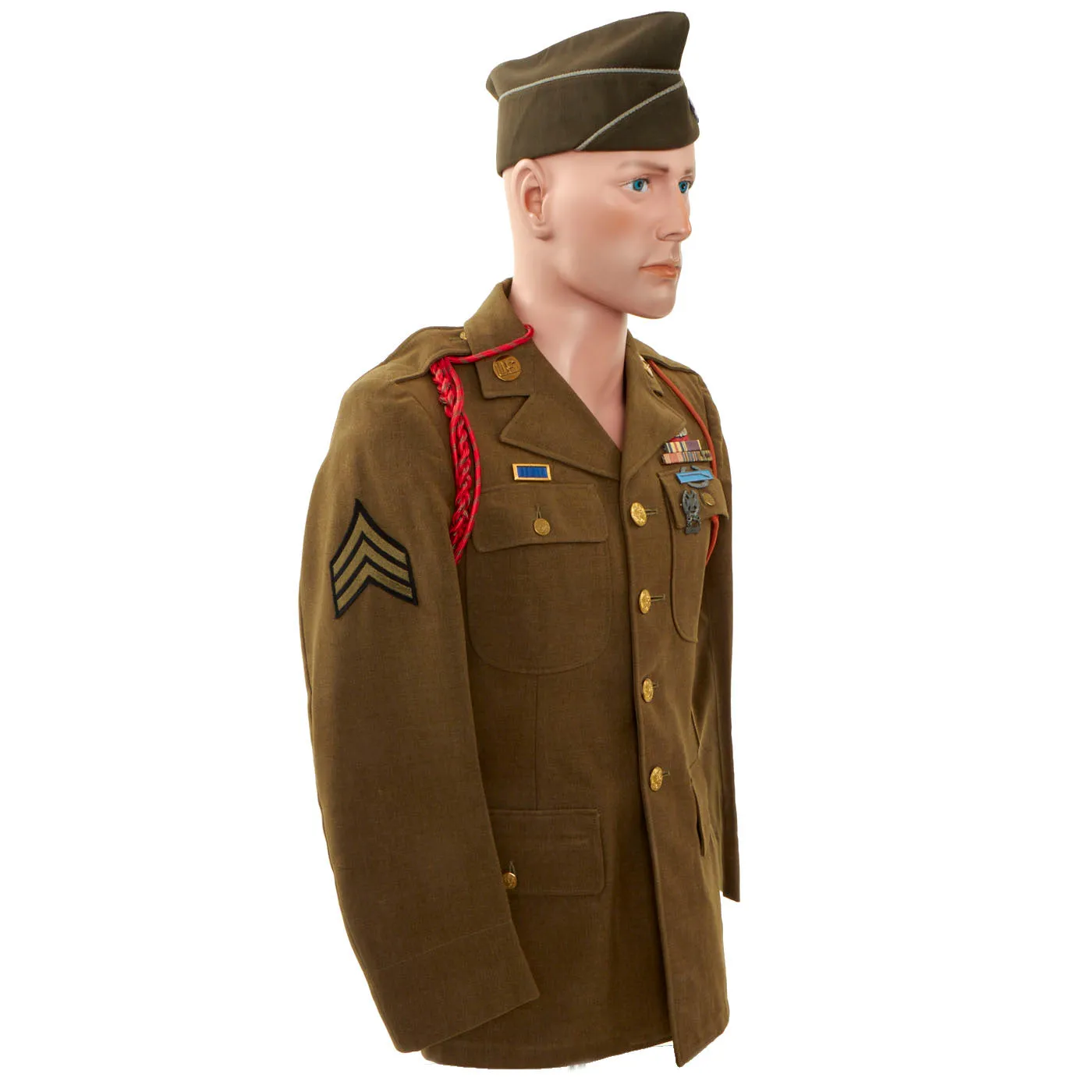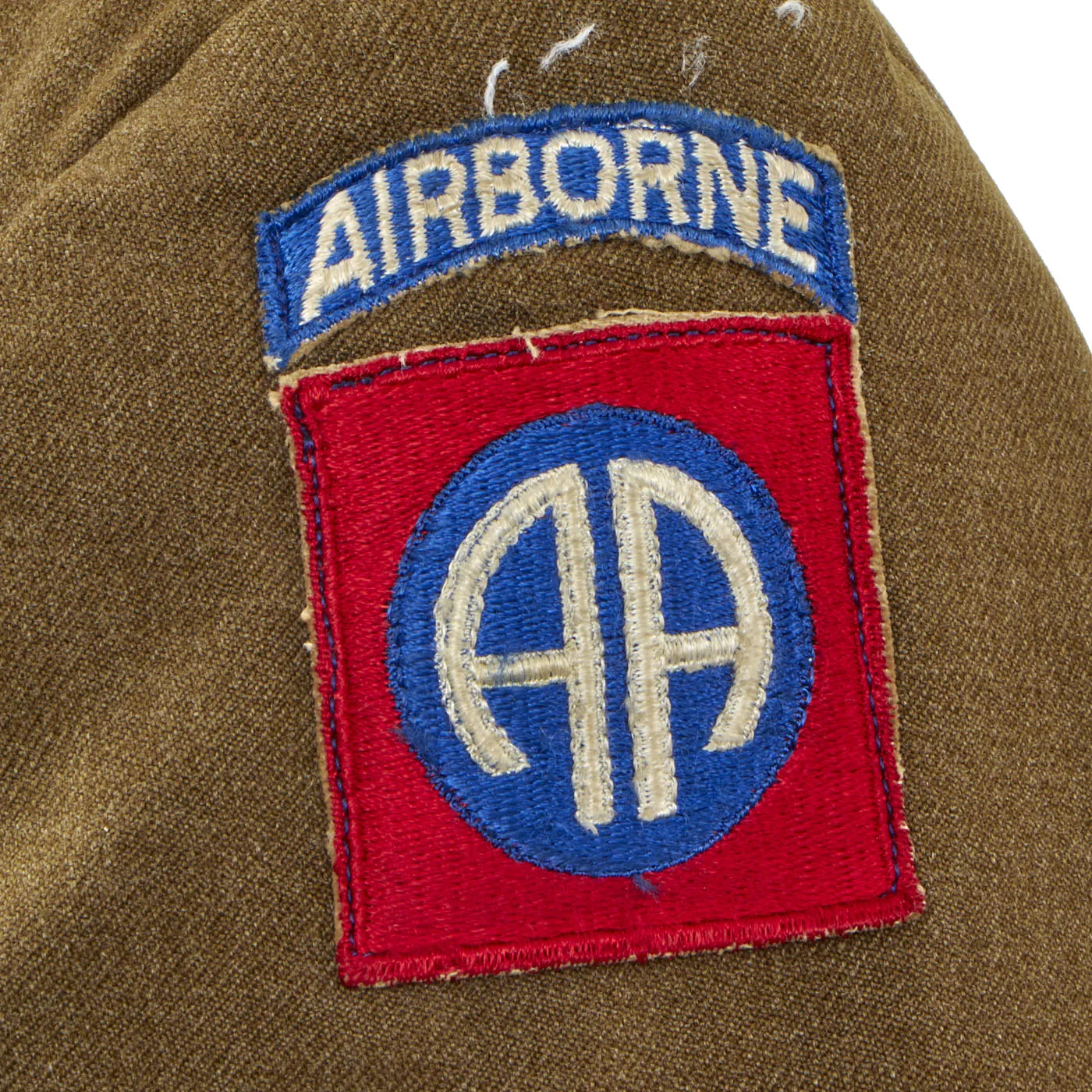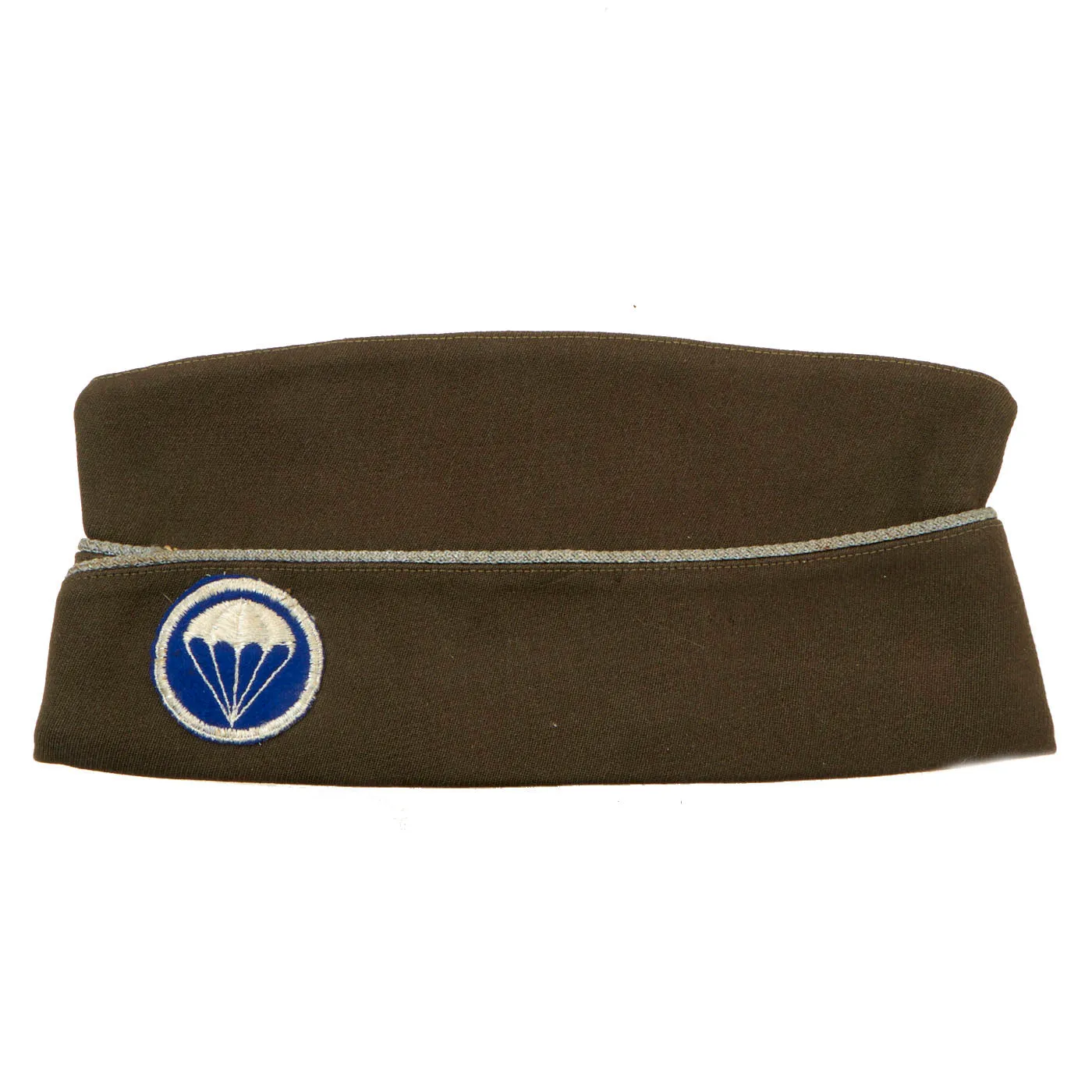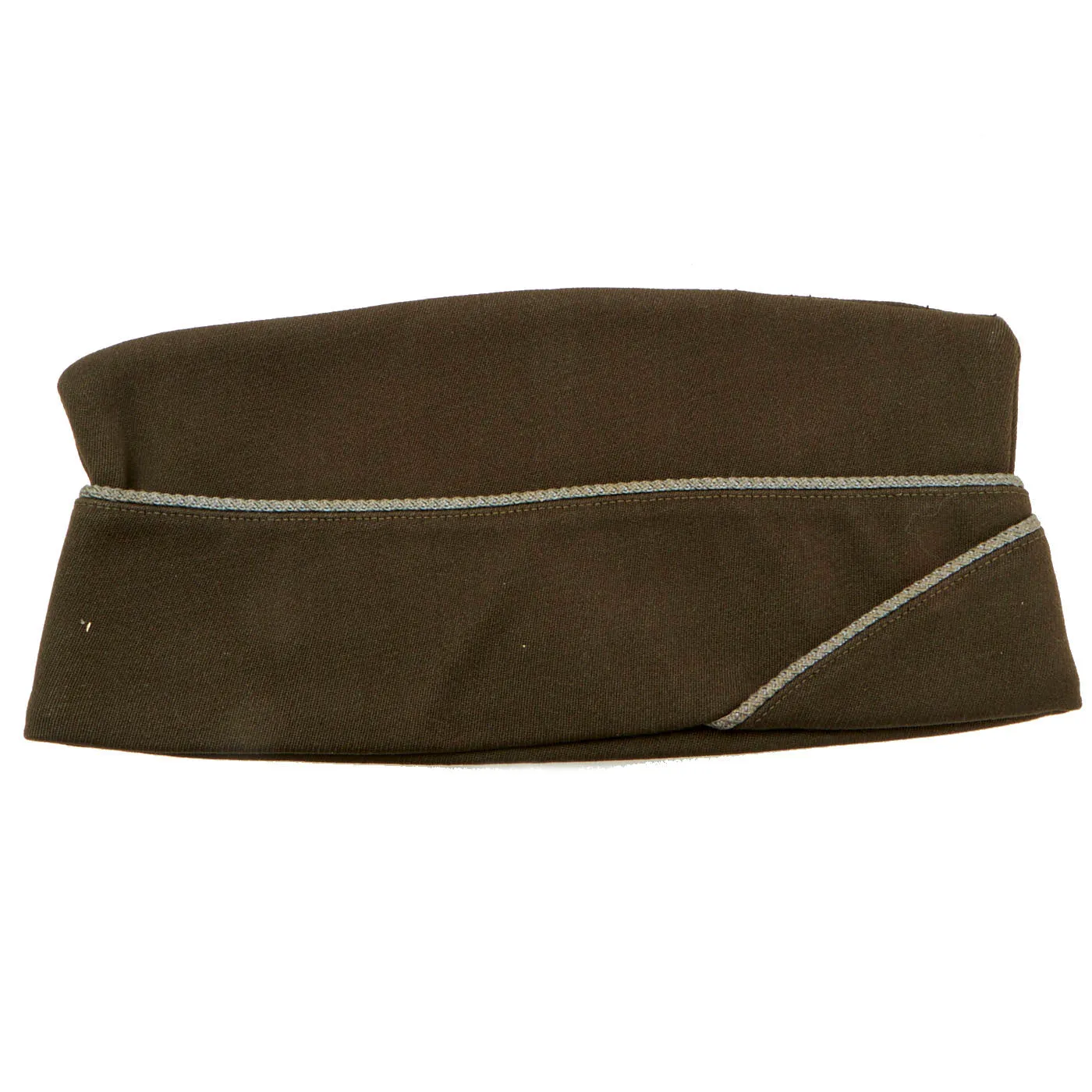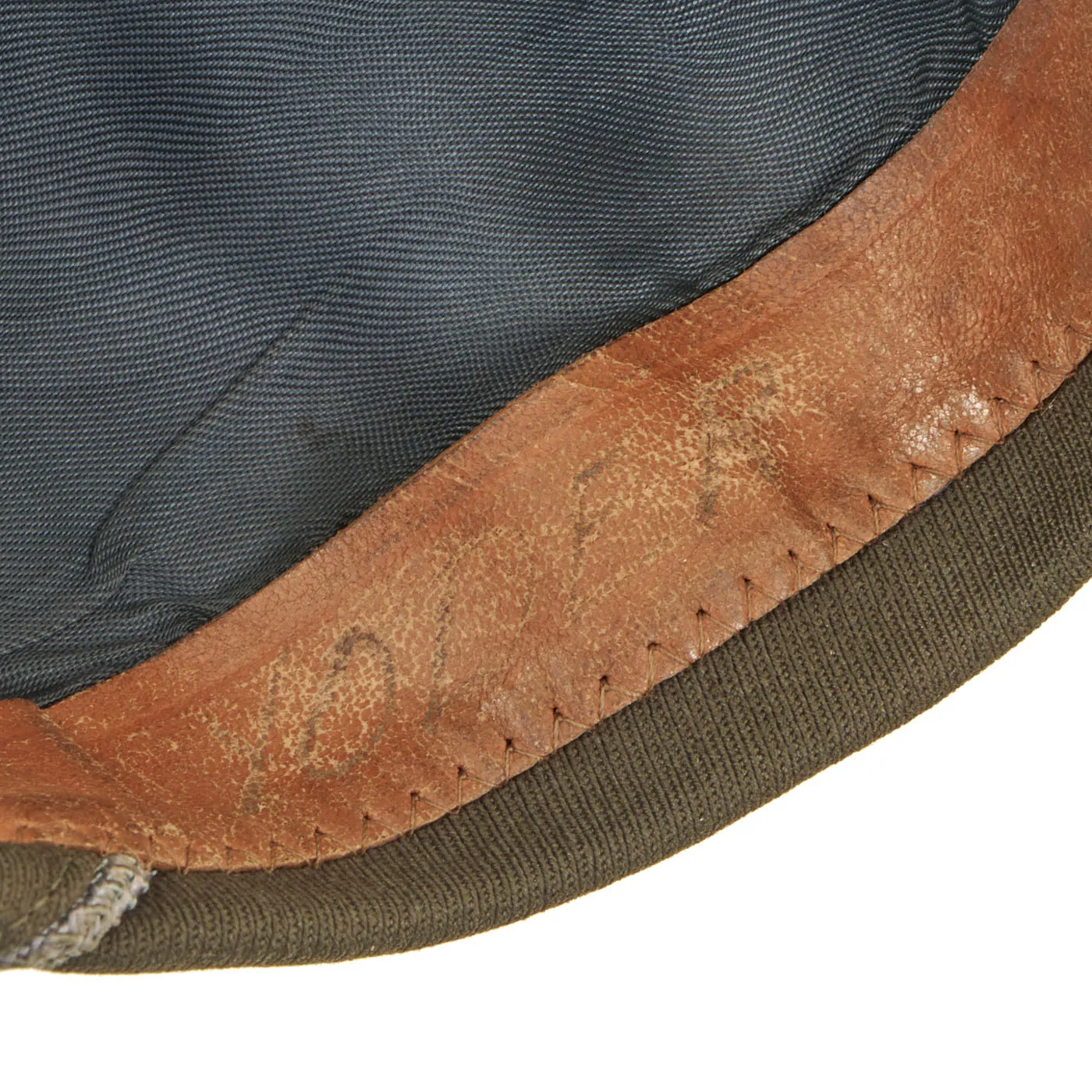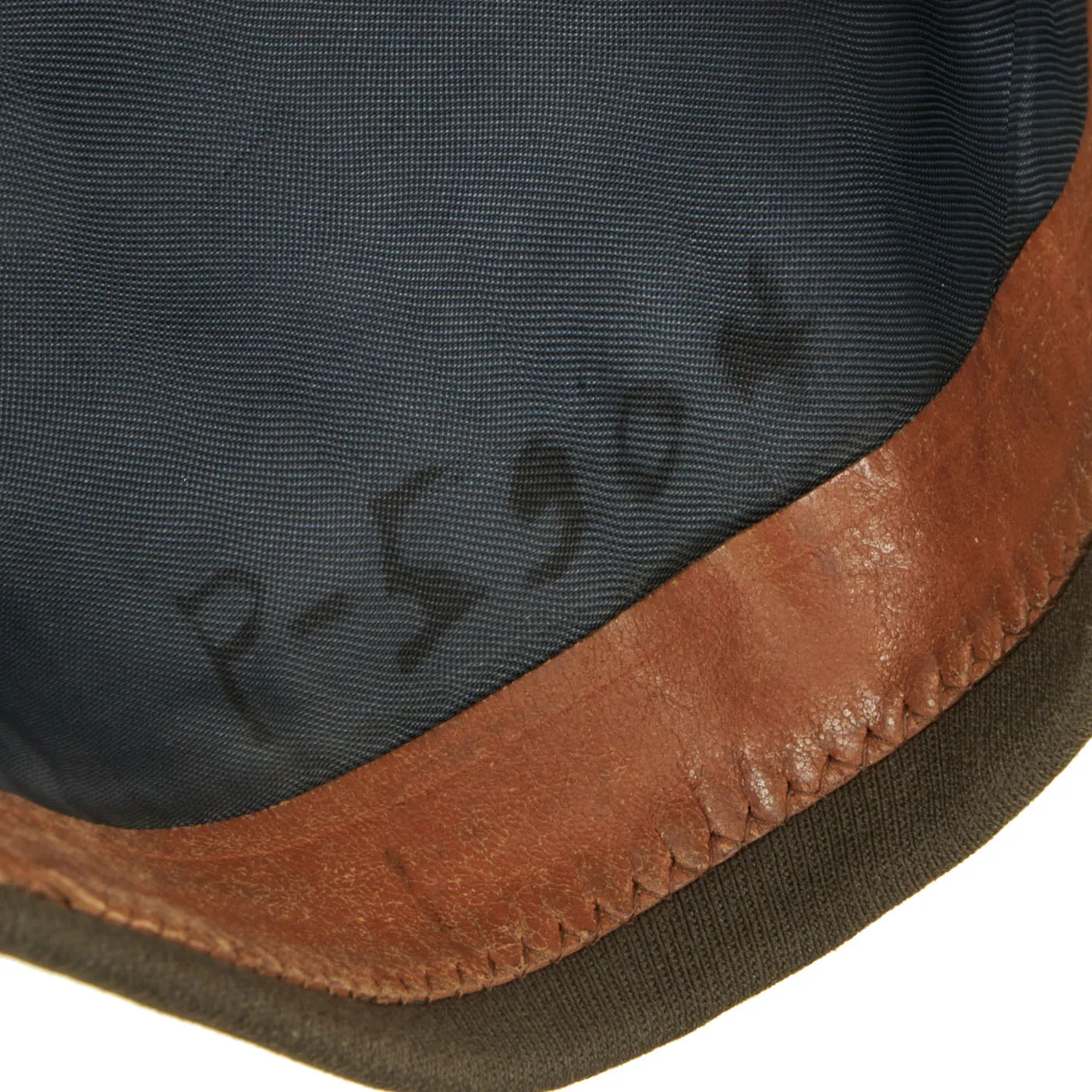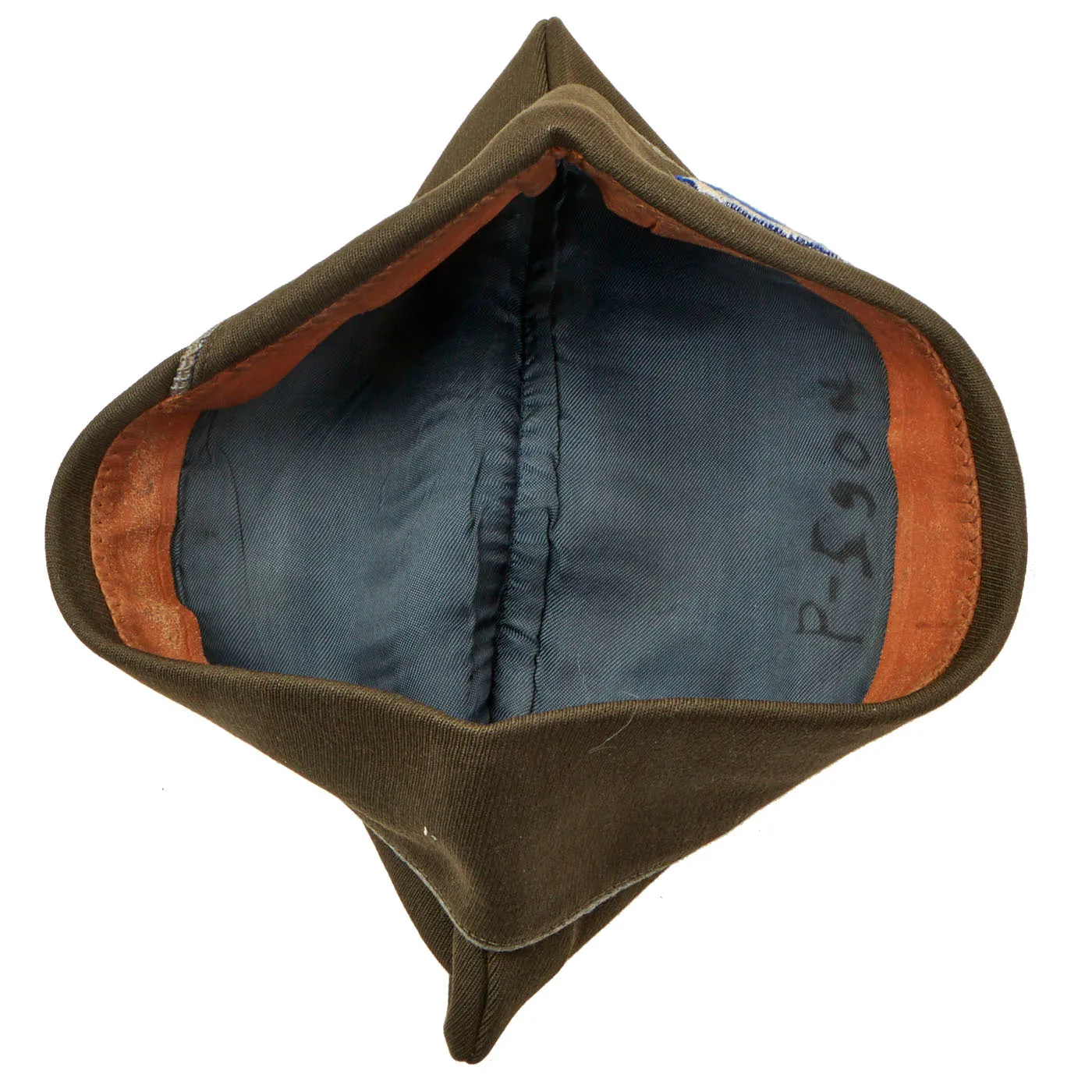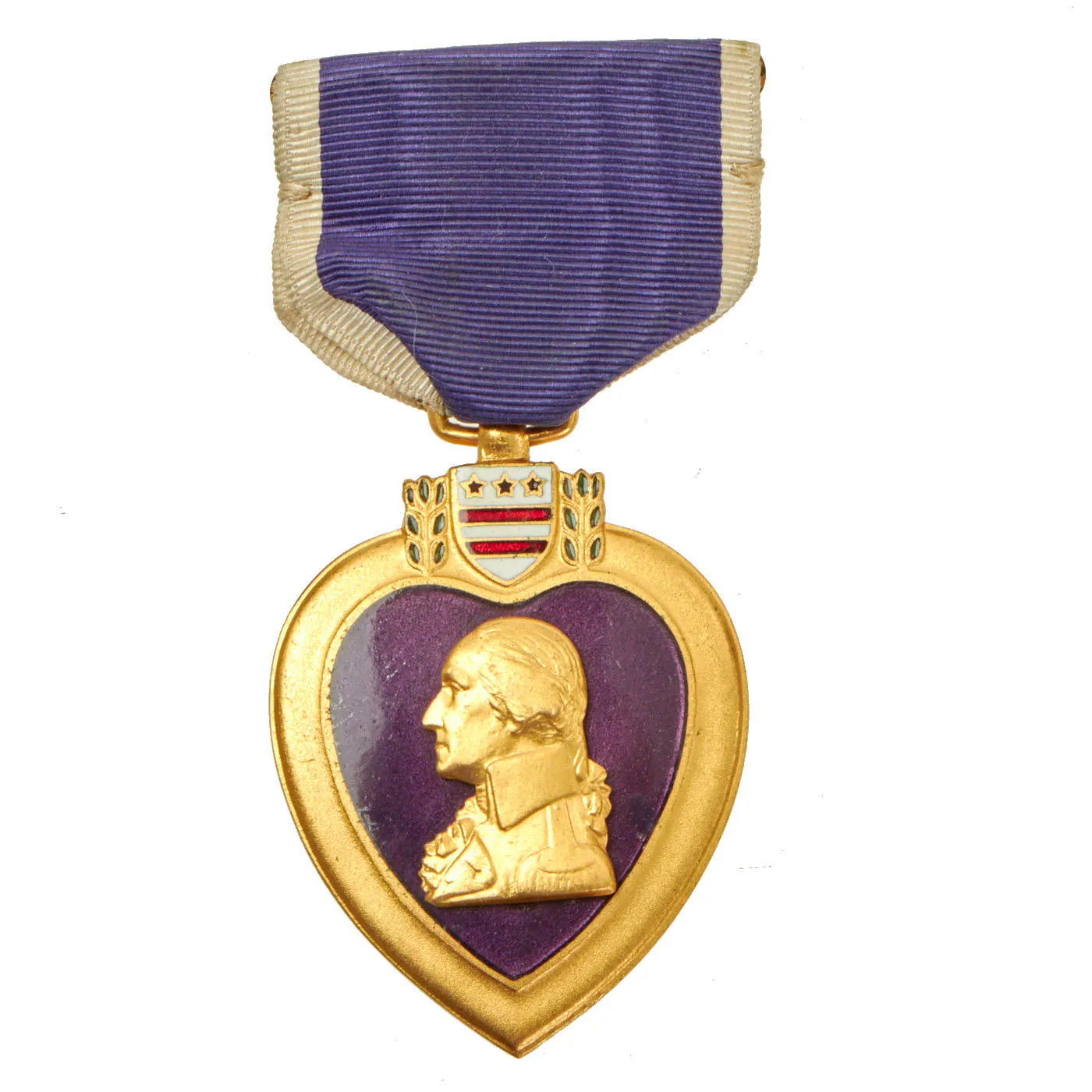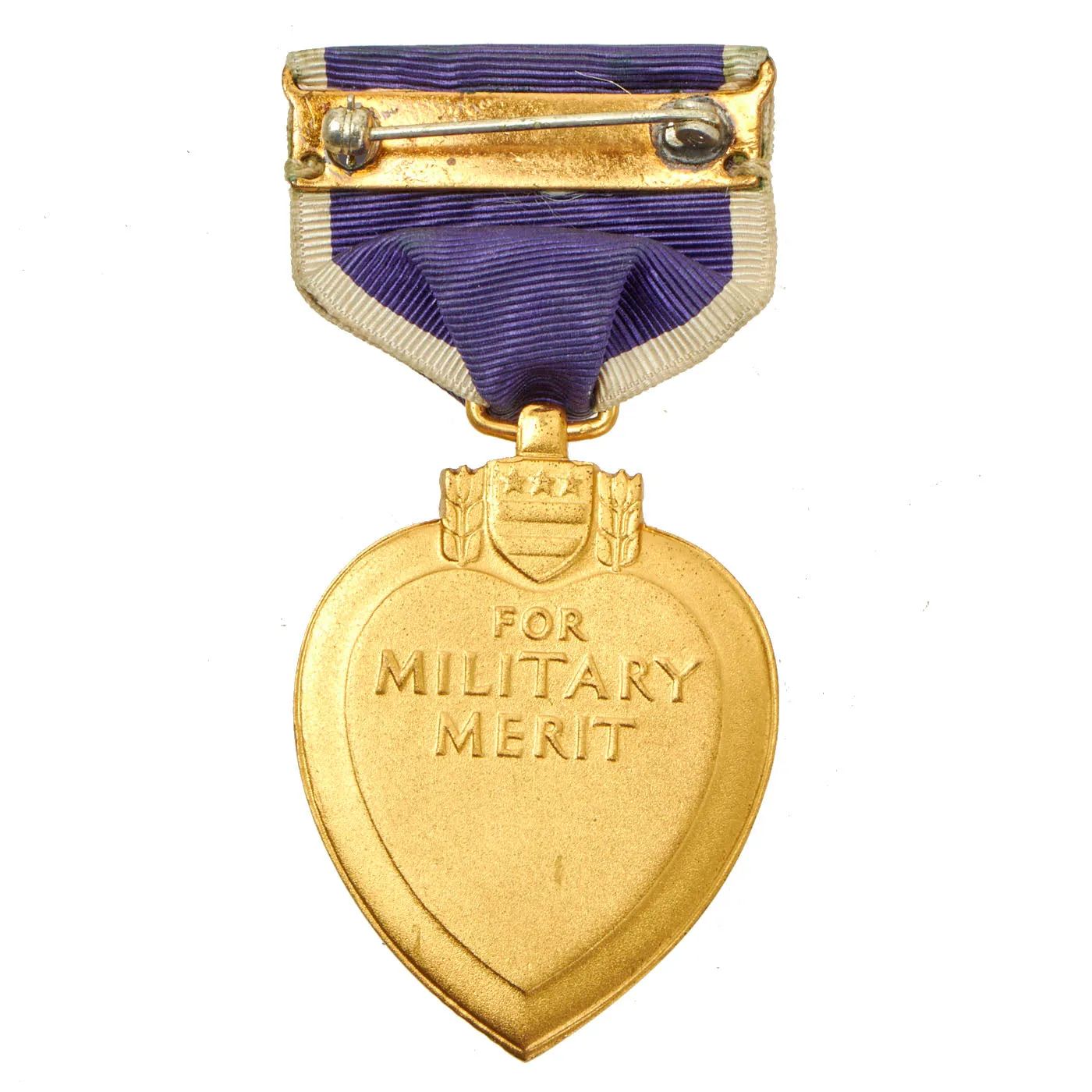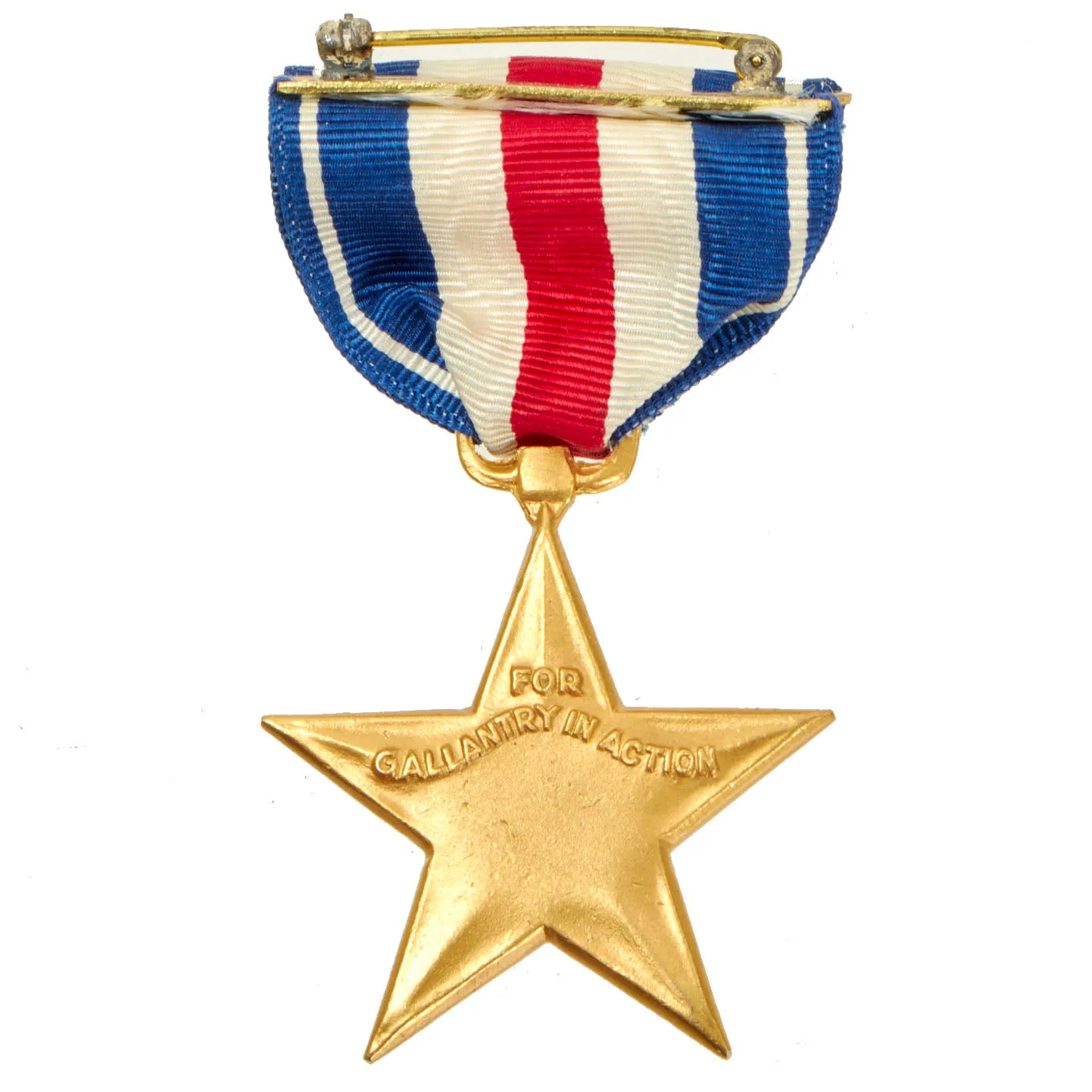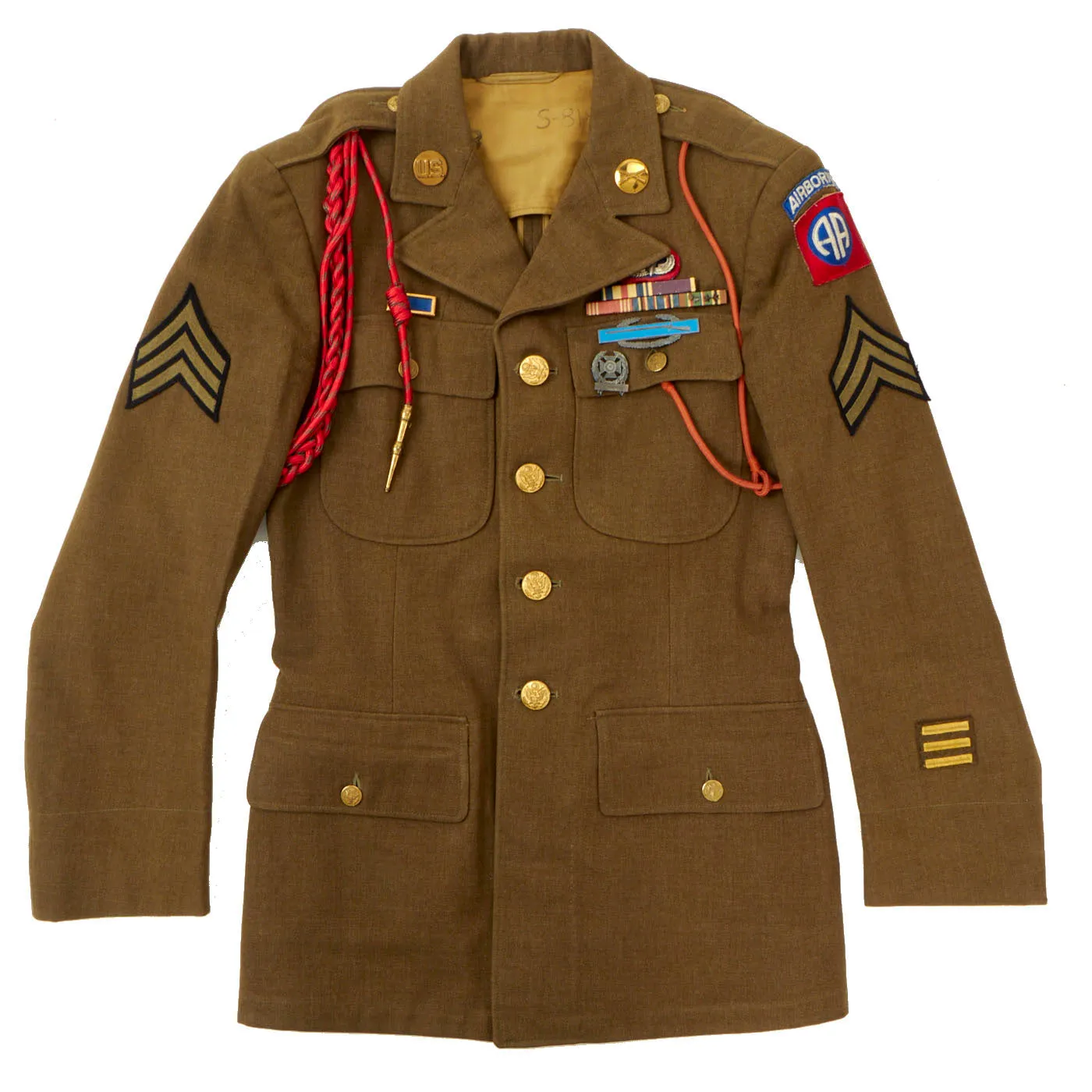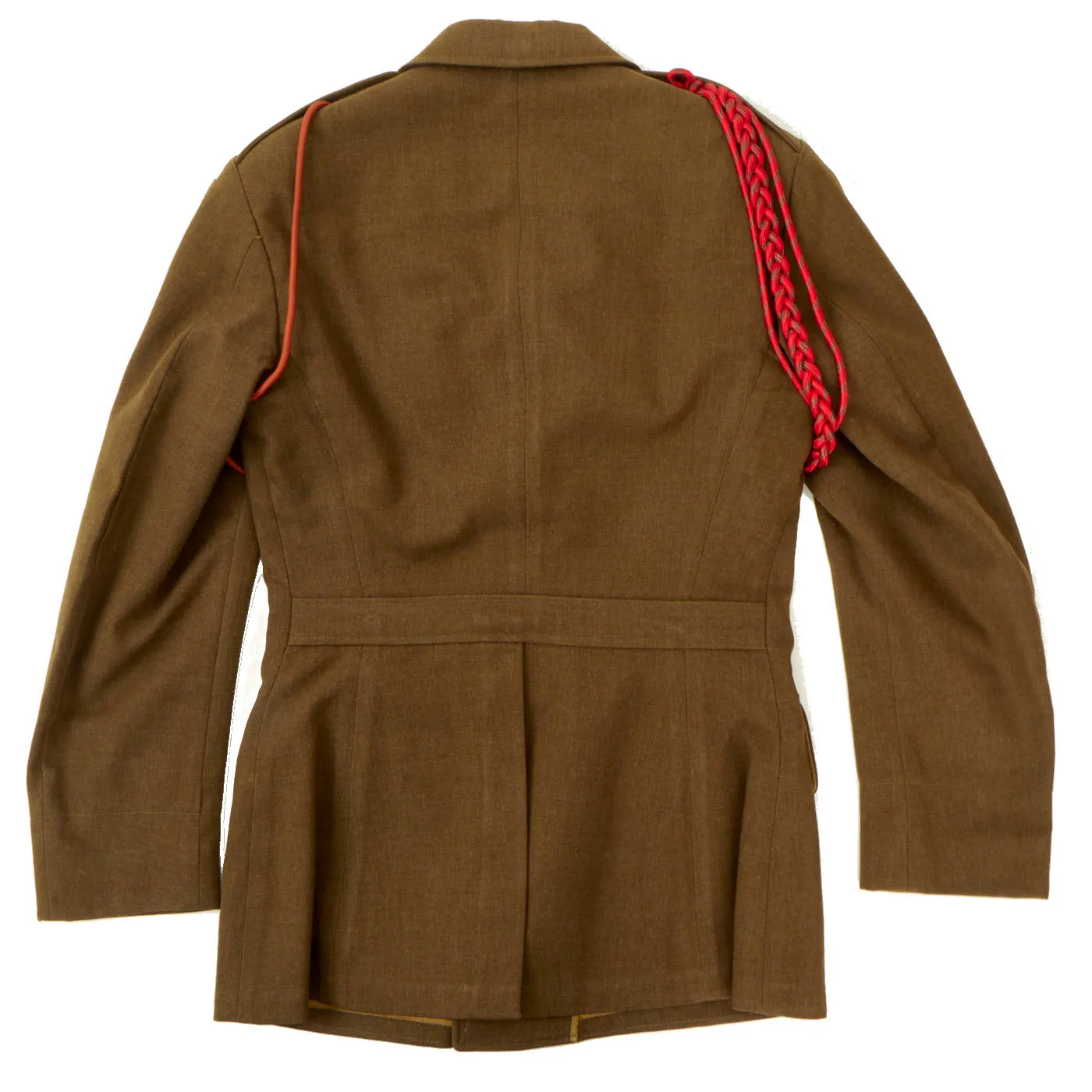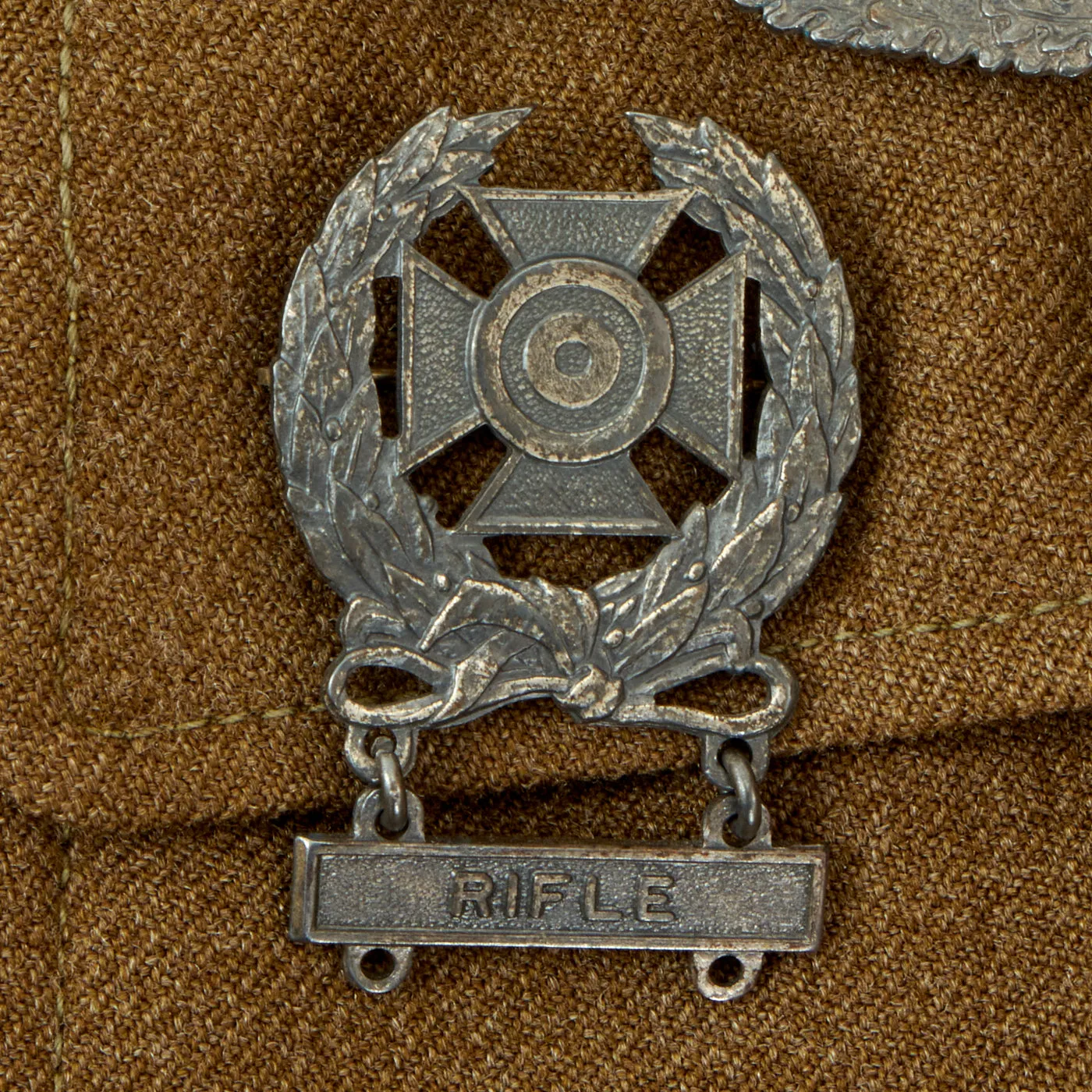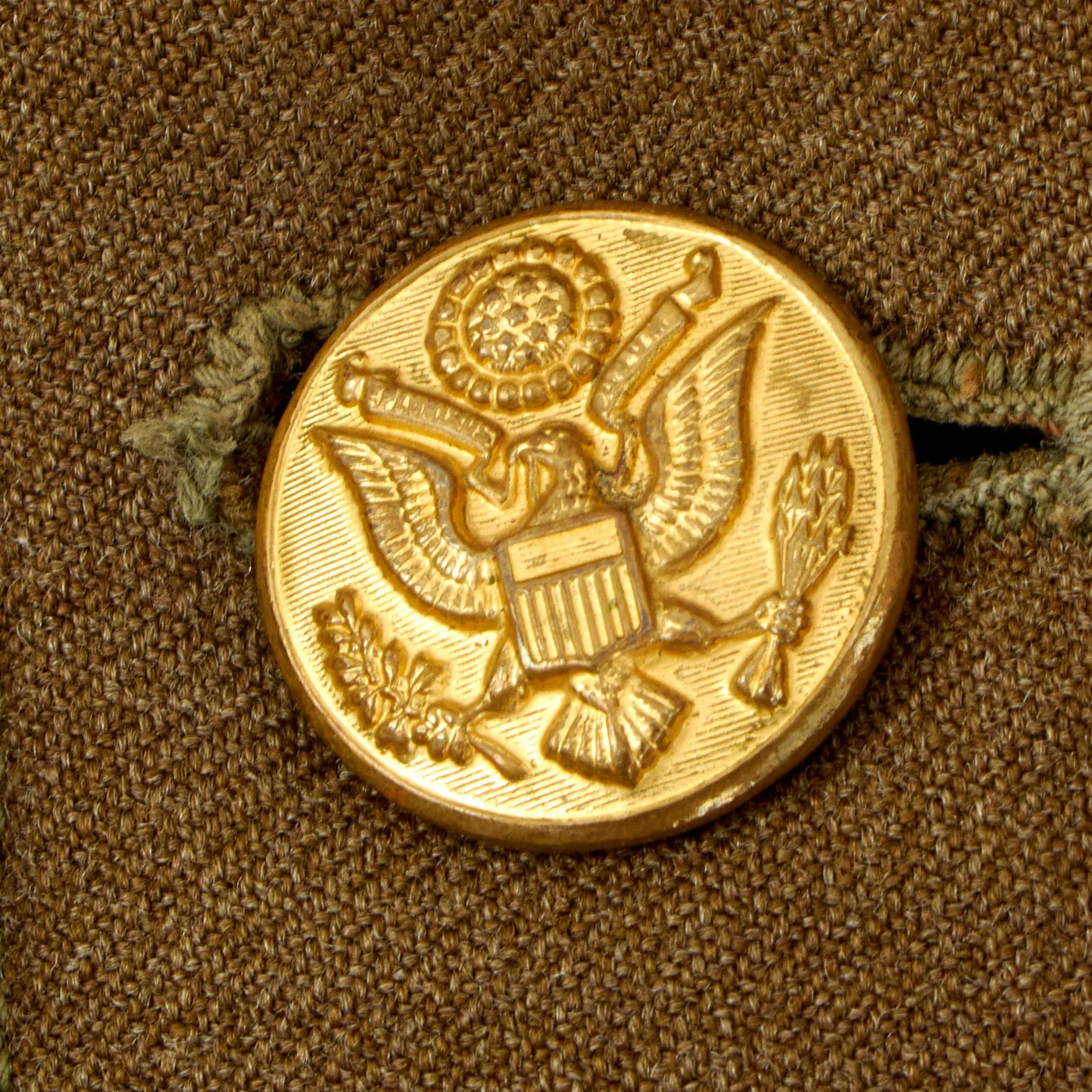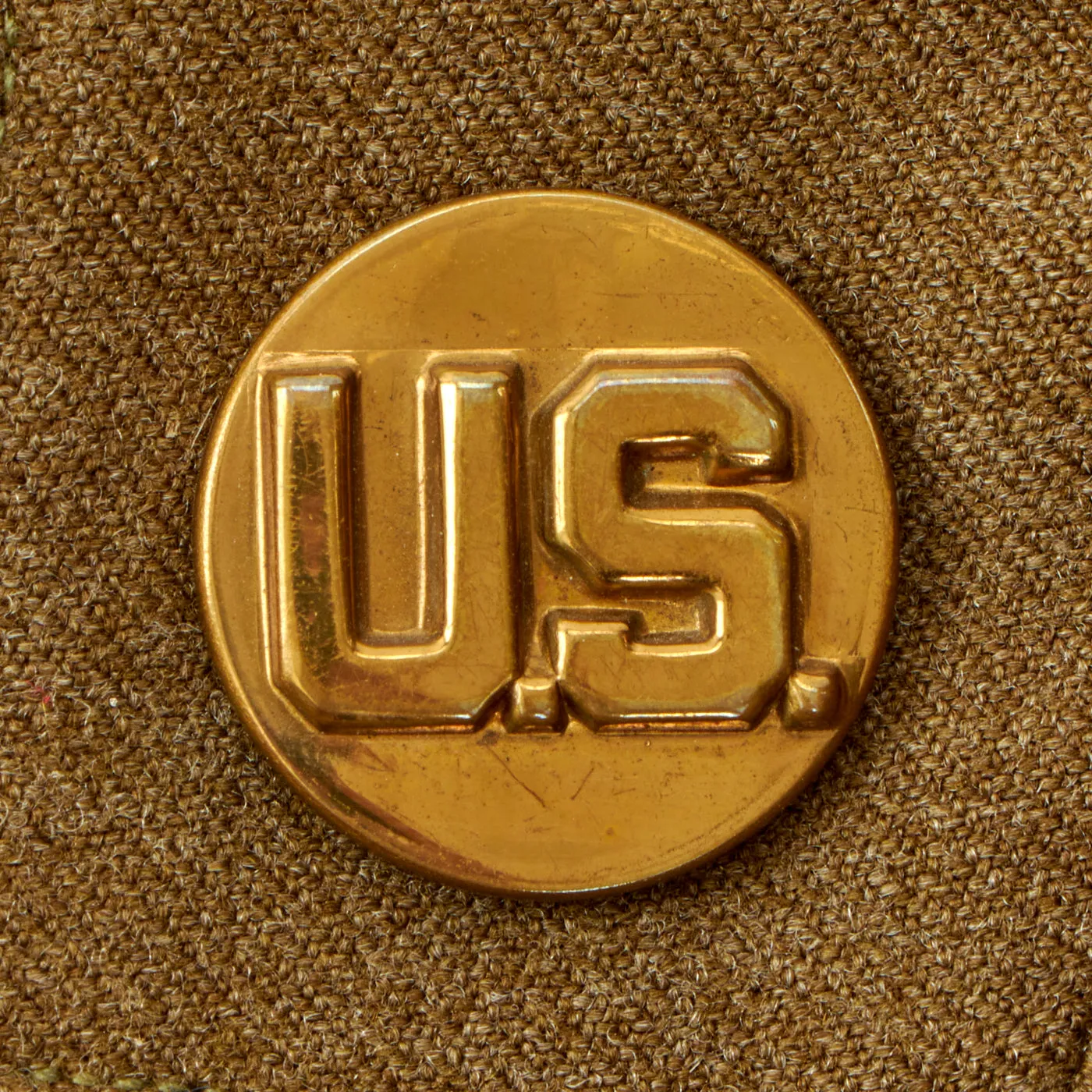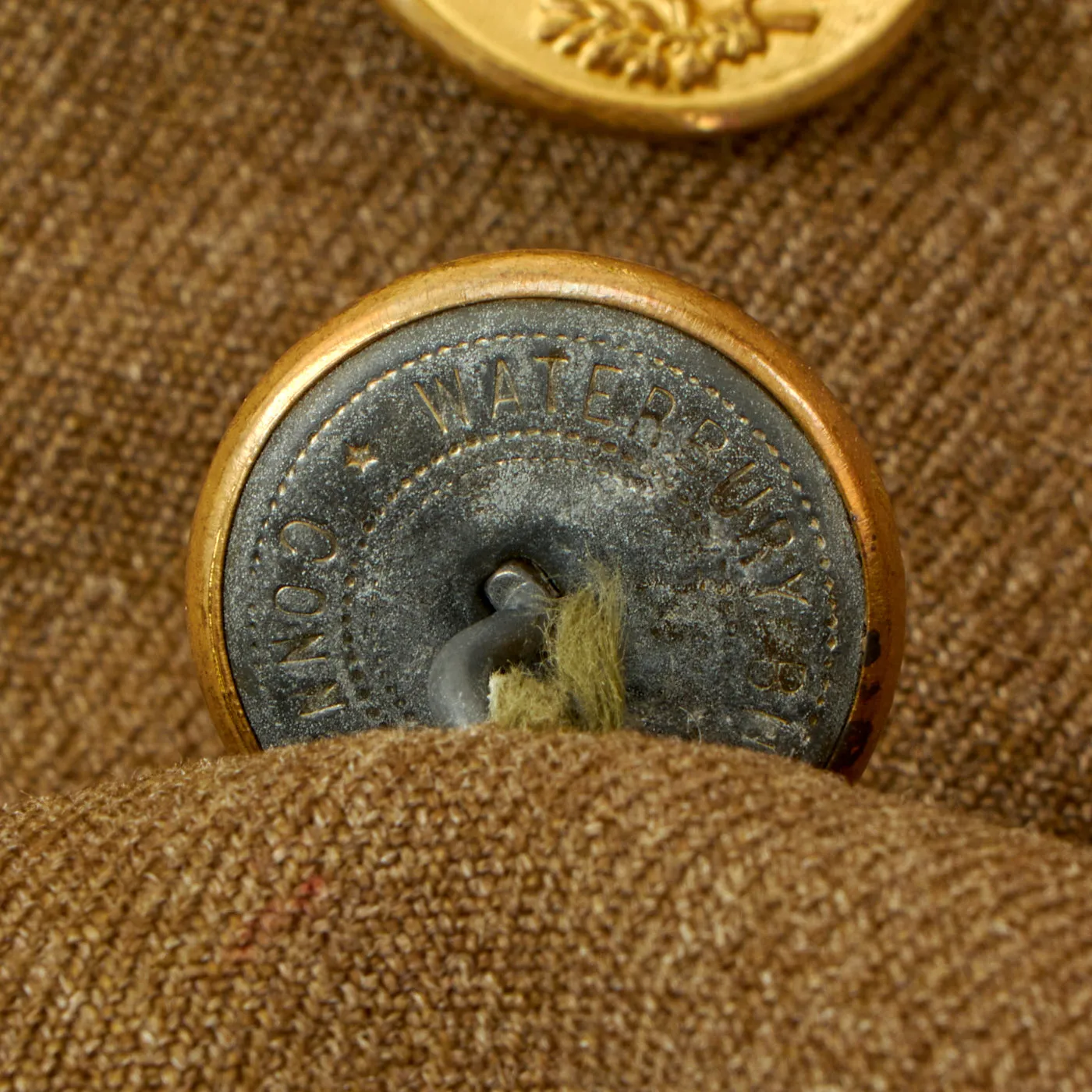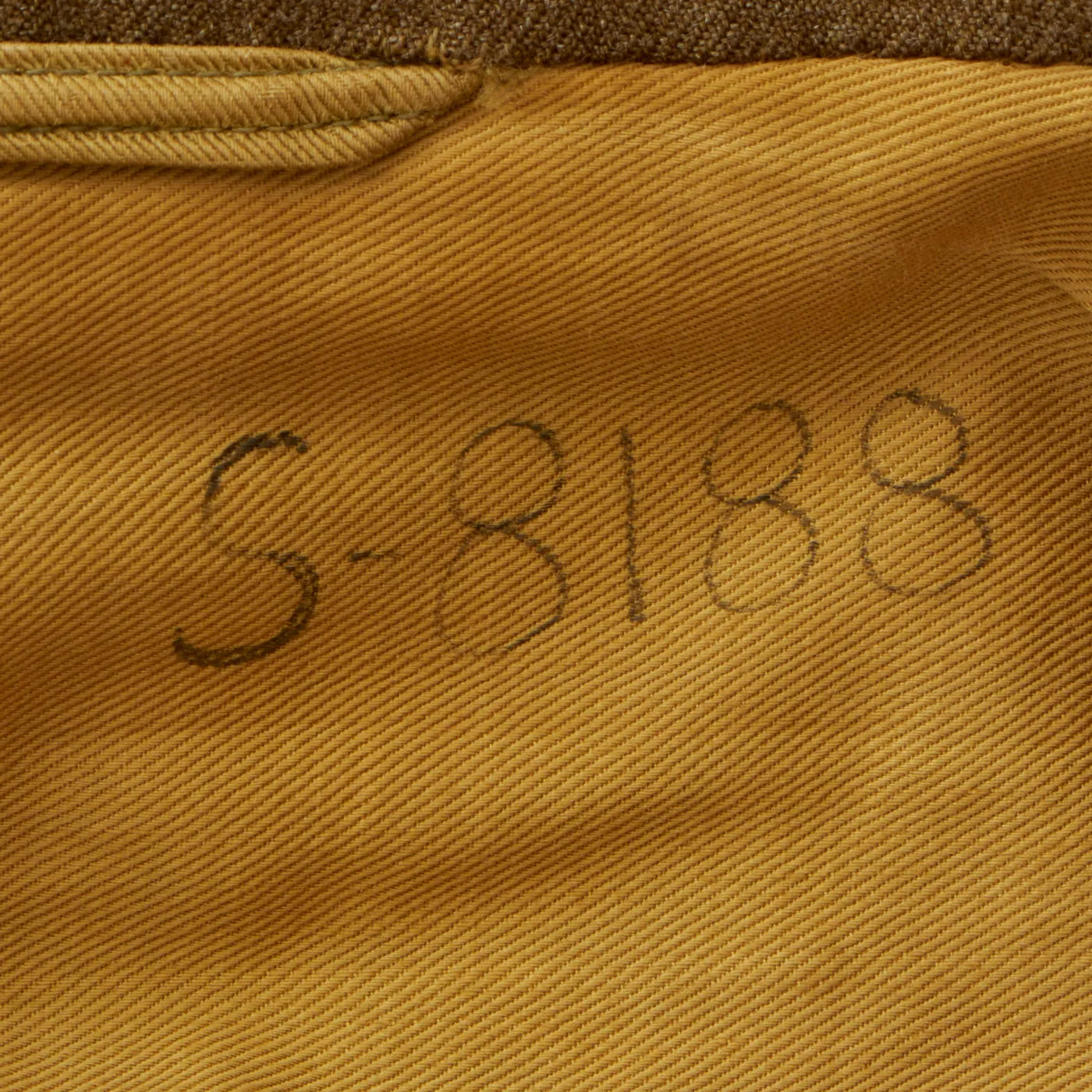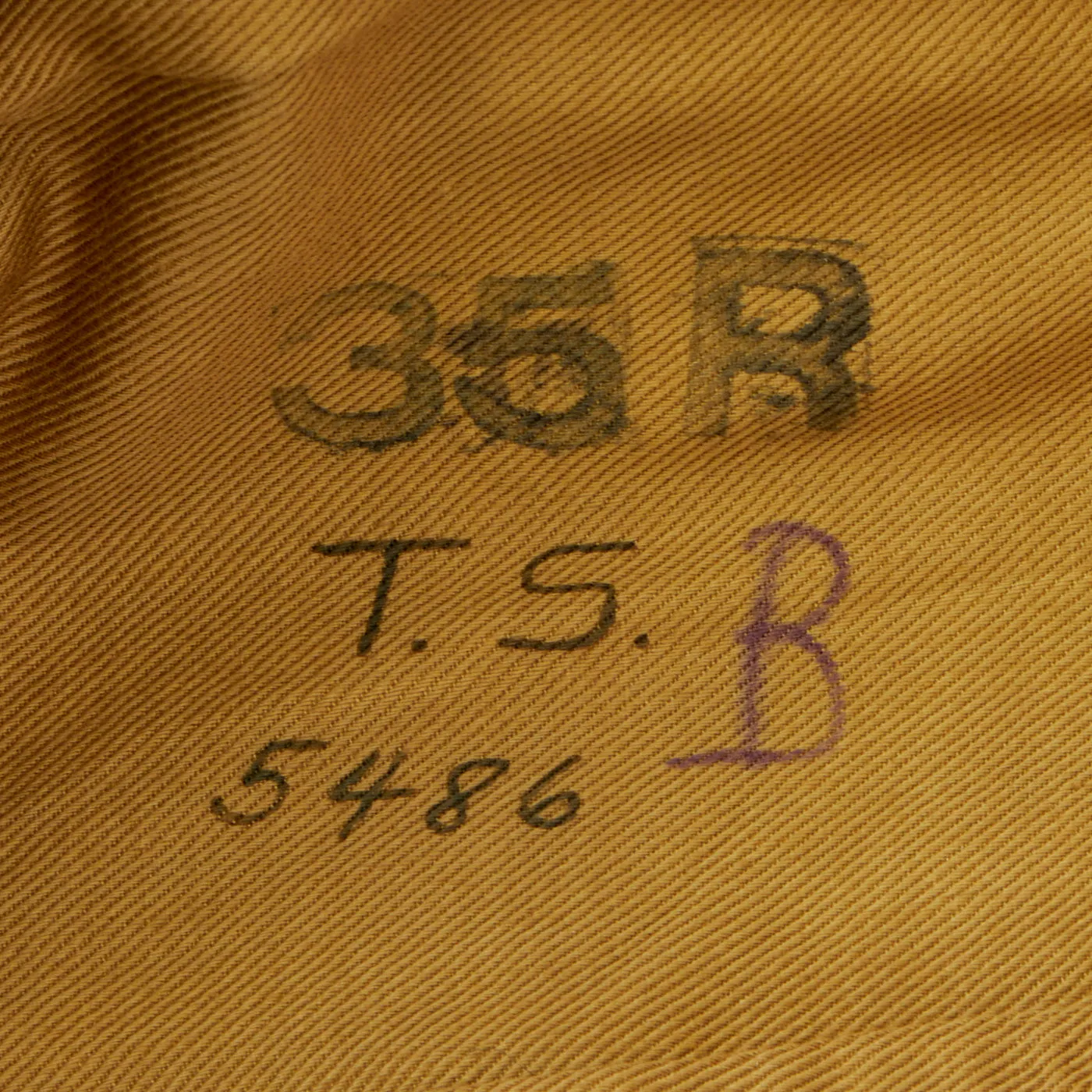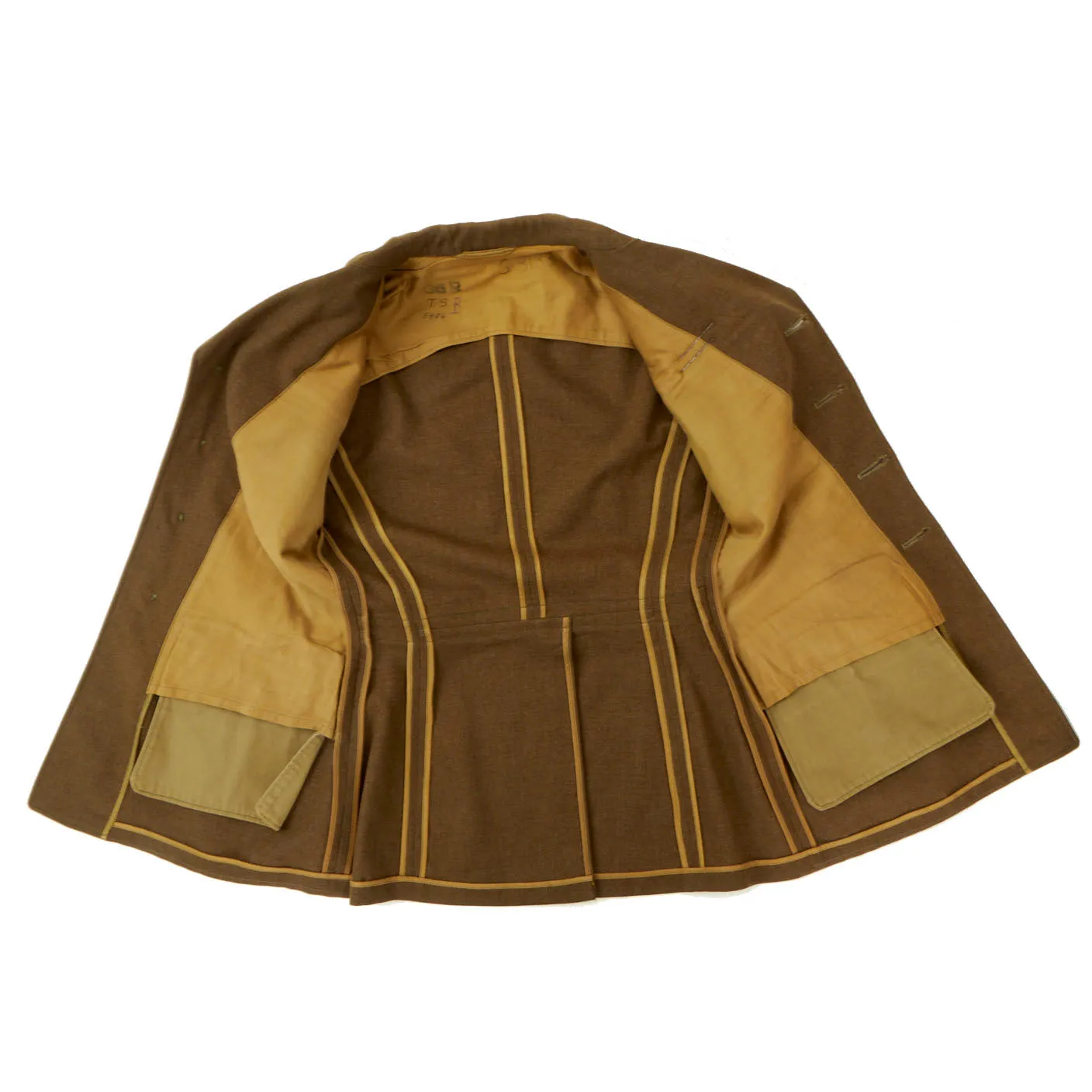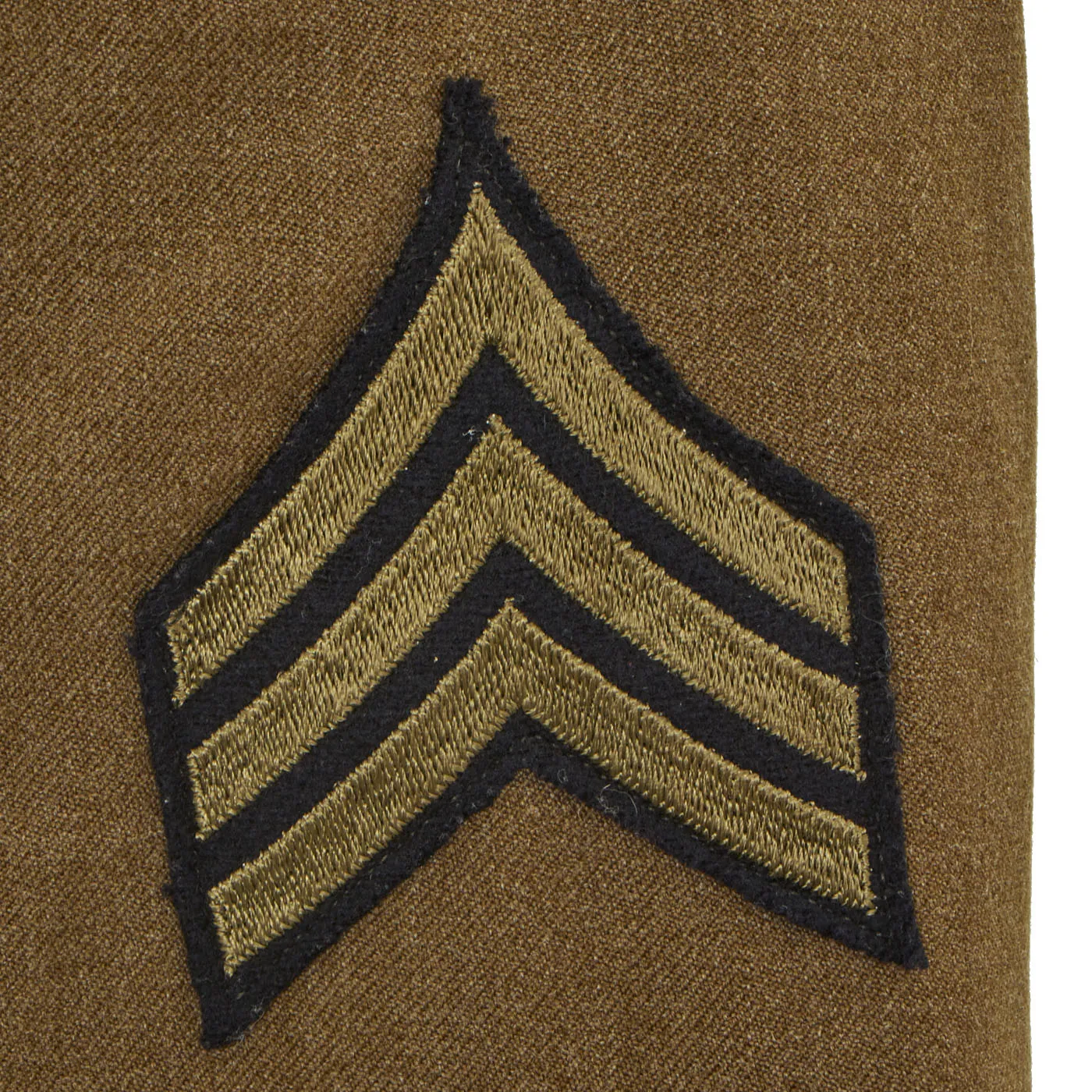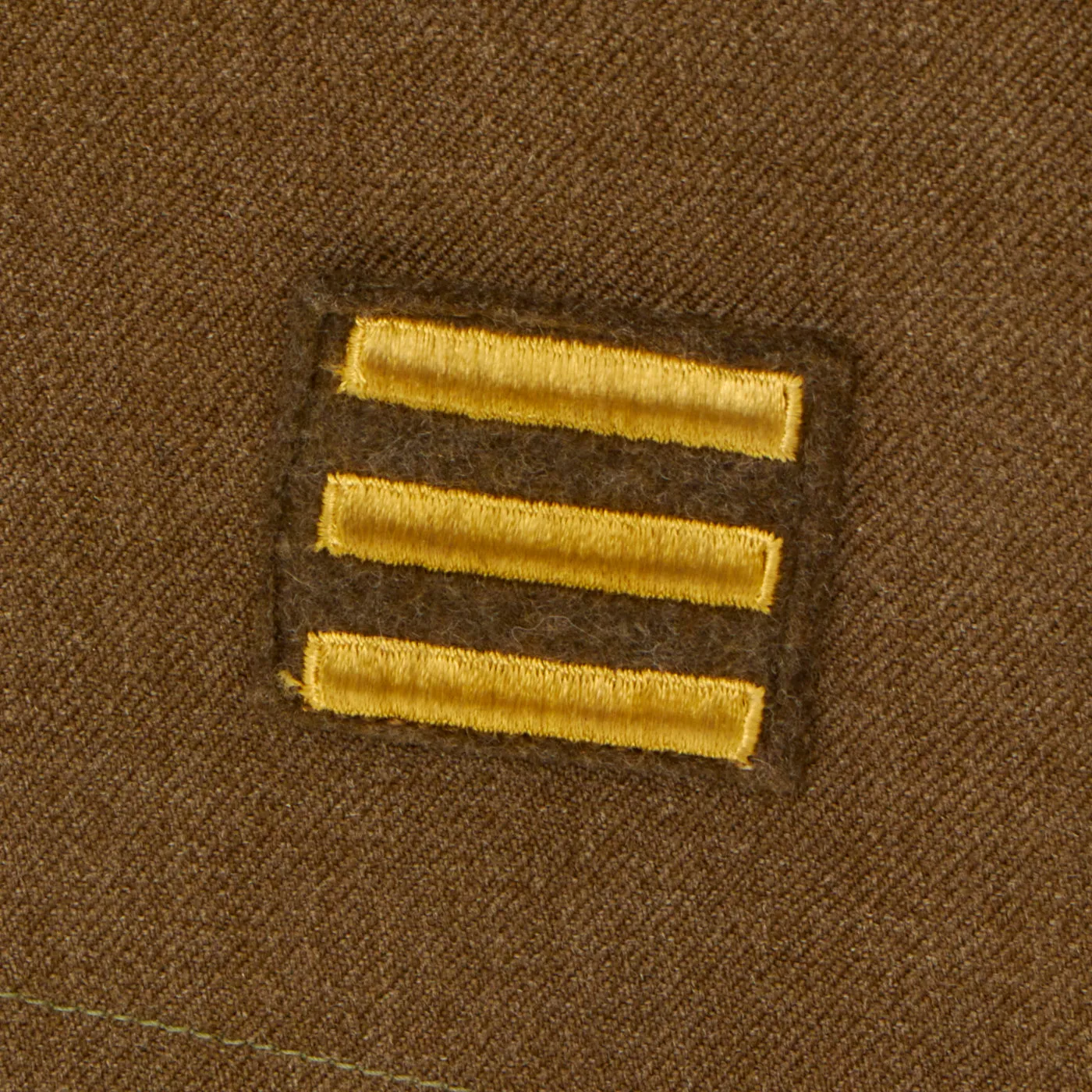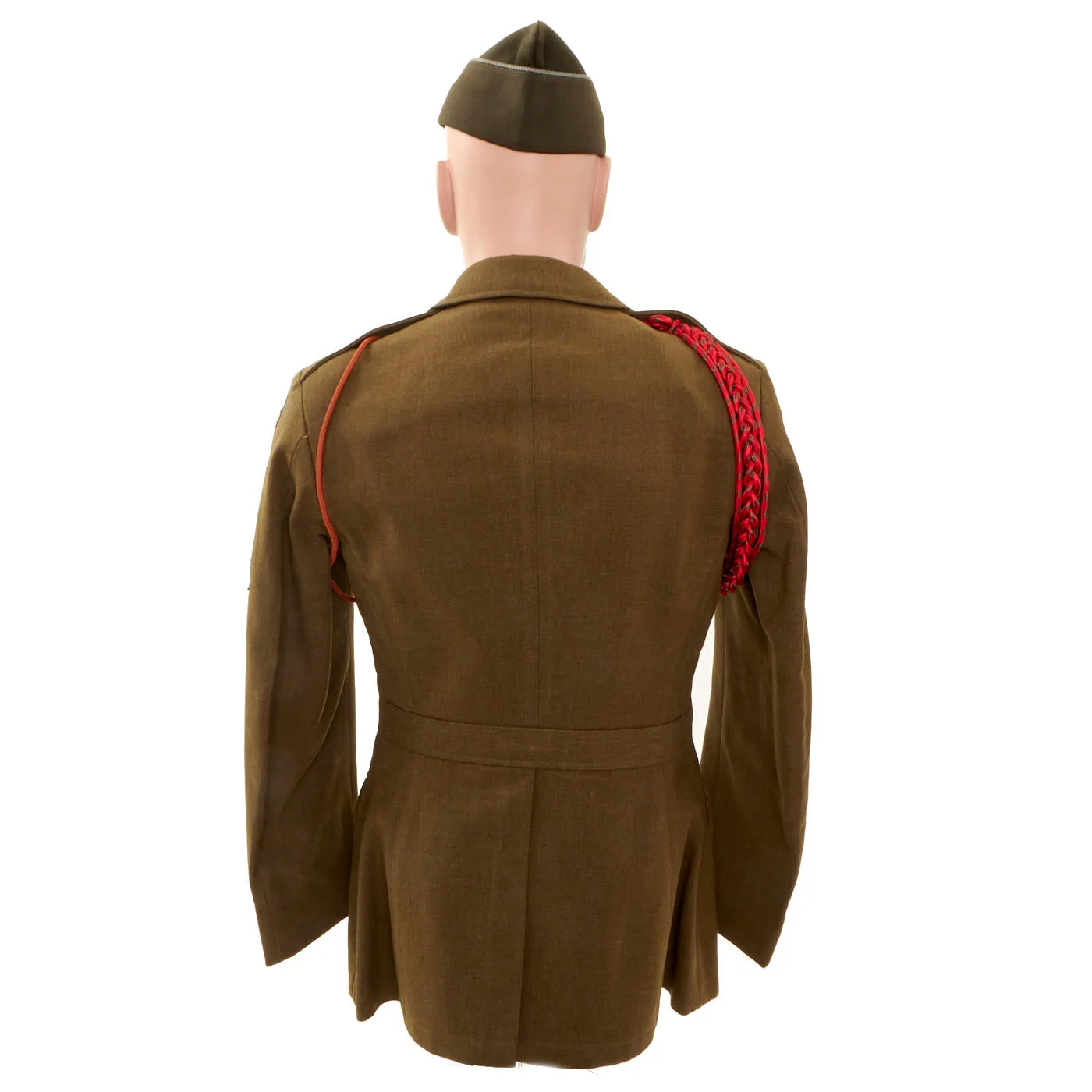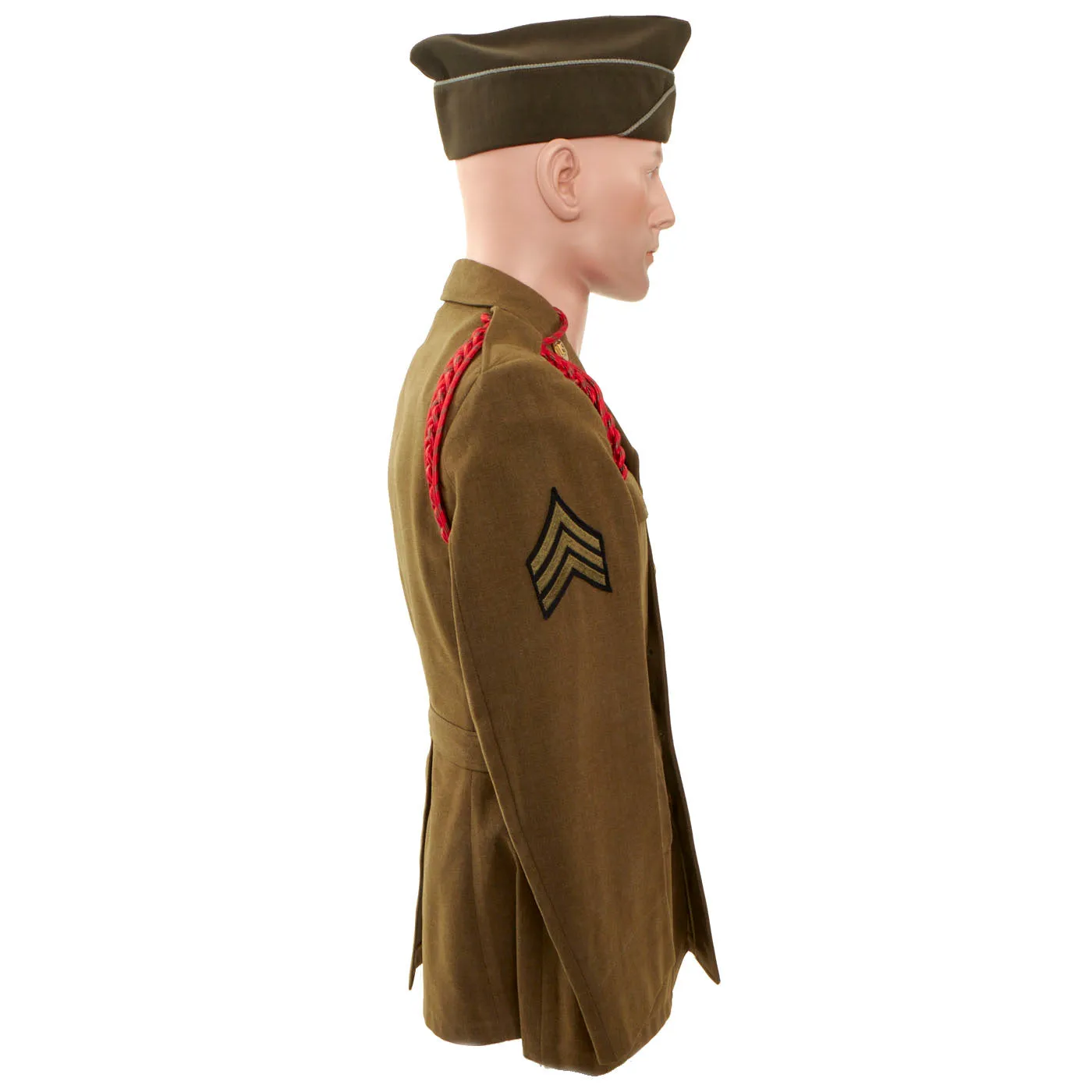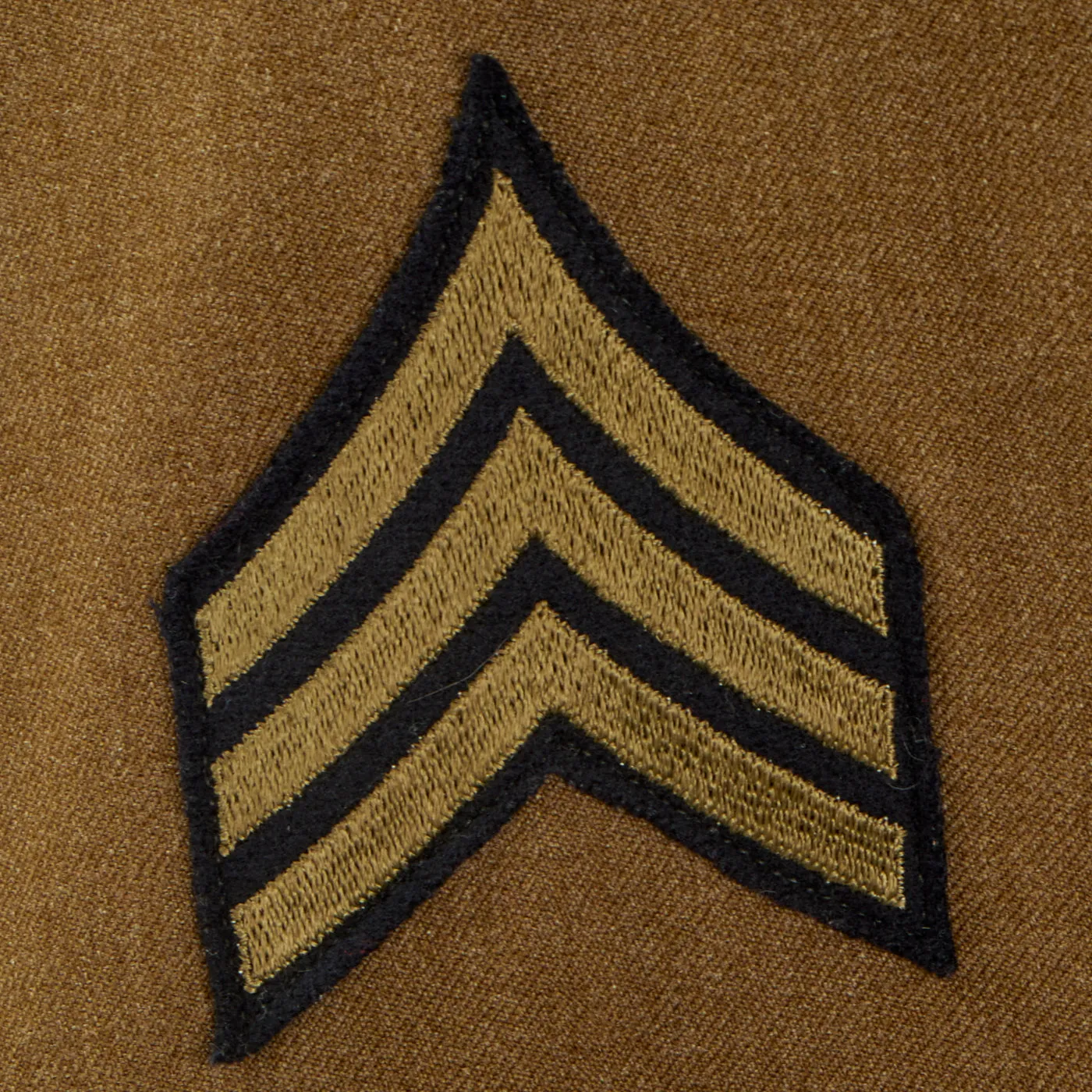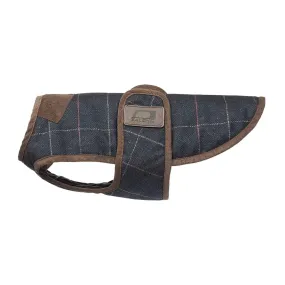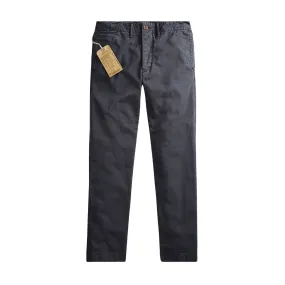Original Items: One-Of-A-Kind. Sergeant Julius A. Sebastian (36178188) enlisted in the Army on April 2, 1942 out of Fort Custer, Michigan, he was not yet a Citizen. He earned his Combat Infantryman Badge for exemplary conduct in action against the enemy in the Sicilian Campaign from July 9th - August 19, 1943.
On June 6, 1944, D-Day, with Company D, 2nd Battalion 505th PIR, 82nd AD, Sergeant Sebastian jumped into St. Mere Eglise, which was the first town to be liberated after the invasion.
The early landings, at about 01:40 directly on the town, resulted in heavy casualties for the paratroopers. Some buildings in town were on fire that night, and they illuminated the sky, making easy targets of the descending men. Some were sucked into the fire. Many hanging from trees and utility poles were shot before they could cut loose.
Later that morning, about 05:00, a force led by Lt. Colonel Edward C. Krause of the 505th PIR took the town with little resistance. After being reinforced in St. Mere Eglise, it was time for Sebastian and the other troopers to push north to take Neuville-au-Plain. It was during this time that Sergeant Sebastion received both the Silver Star and Purple Heart.
Neuville-au-Plain was under the responsibility in the spring of 1944 of the Grenadier-Regiment 1058 (91. Infanterie Division). This village is located on National Road 13 north of Sainte-Mère-Eglise: during the preparation phase of Operation Overlord, the take of Neuville-au-Plain is entrusted to the 2nd battalion of the 505th Parachute Infantry Regiment (82nd Airborne Division) commanded by Lieutenant-Colonel Benjamin H. Vandervoort.
The 3rd section of Lieutenant Turnbull consisted of 42 paratroopers equipped with a few additional weapons including BAR machine guns, bazookas and two 57 mm anti-tank guns. The soldiers seized the village without difficulty, the Germans having not had time to entrench themselves. In accordance with the orders received, Turnbull settled on the cover north of the commune. At 10.30 am, a column of German soldiers of about 200 men approached the American positions: the paratroopers unleashed a massive and precise fire that managed to stop the enemy, forcing him to withdraw. Unable to neutralize the US defense by direct fire, the Germans decided to use their mortars to fix the section of paratroopers and they simultaneously initiated a maneuver bypass with the infantry. Undergoing heavy losses and soon overwhelmed by the enemy, Turnbull realizes that he can not hold out any longer.
One of the privates spoke up. "I'm ready," he said. PFC JOSEPH SEBASTIAN, who had just come in from prowling the right flank where he had talked to CPL JOSEPH TREMEL who had been with KEENAN (another trooper) when he died, said: "No, I don't think we're quite cut off yet. I think there's a chance we can get out; that's what we ought to do." TREMEI had told him that while a few of the enemy had reached the houses on the right flank, the greater part of them were still one hedgerow short of closing on the hamlet. TURNBULL asked the others: "What about it?" They supported SEBASTIAN and told him that it would be better
to try and get out.
TURNBULL told them to leave the wounded and CPL JAMES KELLY, first aid man, said he’d remain and be taken prisoner, if possible, in order to see the wounded through. Some of the guns far over on the right had to be abandoned because the enemy skirmishers were now coming with a rush.
Sebastian and another trooper remained behind to cover the troopers retreat as they headed back towards St. Mere Eglise. In the process, Sebastian was wounded by enemy shrapnel from repeated mortar strikes on his position. In the end, reports say that him and the other trooper were captured, but their covering fire allowed the rest of the platoon to regroup back in St Mere Eglise.
It is unclear on whether Sebastian was actually a POW or was just briefly held captive until the rest of the unit was able to push through the town and recover the two troopers.
Sebastian was wounded in his right arm and spent 415 days recovering in the hospital, where he ended up having his right arm amputated just above the right wrist.
For his actions that day, he was awarded the Silver Star and a Purple Heart.
This wonderful grouping consists of the following items:
- Size 35R Class A Service Coat: Coat features beautiful personal marking on the inside liner with his laundry number (S-8188). Jacket also features a clean, crisp 82 AB patch on left shoulder as well as Sergeant chevrons on both sleeves and 3 overseas stripes on the lower left sleeve denoting 18 months of overseas service. On the left breast there is a beautiful blue with red trim backed jump wings beneath it a ribbon bar consisting of a Silver Star, Purple Heart, Good Conduct, American Campaign and an EAME with 3 bronze stars and a bronze arrowhead. Beneath the ribbon bar is a Combat Infantry Badge and a Rifle Marksmanship badge. On the right breast, just above the pocket is a Presidential Unit Citation. On the right shoulder is the "Belgian Fourragère 1940"- composed of one round smooth cord, partially braided, and of TWO other cords, of which one is terminated by a knot and a brass ferret - it is made of wool and cotton for NCOs and EM, and of silk for Officers - all threads are tinted in colors resembling the ribbon of the Belgian Croix de Guerre 1940 (i.e. basic red, dotted with green threads) - the Fourragère encircles the right shoulder and passes under the armpit, and is fixed by 2 tiny loops onto the button of the shoulder loop. On the left shoulder is the "Order of the Orange" shoulder cord awarded by the Dutch government for surviving Operation Market Garden.
- Overseas Light Blue Piped Cap WIth AB Patch
- REPLACEMENT Silver Star and Purple Heart Medals: Unmarked, as most replacement medals are.
- “Four Stars Of Valor” by Phil Nordyke: This is a book of the combat history for the 505th PIR during WW2. Sebastian is featured in Chapter 9 “A Small Unit Performance That Has Seldom Been Equaled” and is mentioned on Page 166-167.
- Research: The black binder is filled with almost completed research for Sebastian and contains dozens of pages in document sleeves as well as loose papers. There are service records, pat records, hospital reports, after action reports and more.
This is truly an incredible grouping and is already nearly 100% researched! Any collection would be honored to have this collection among its ranks. Comes ready to display and research further.




